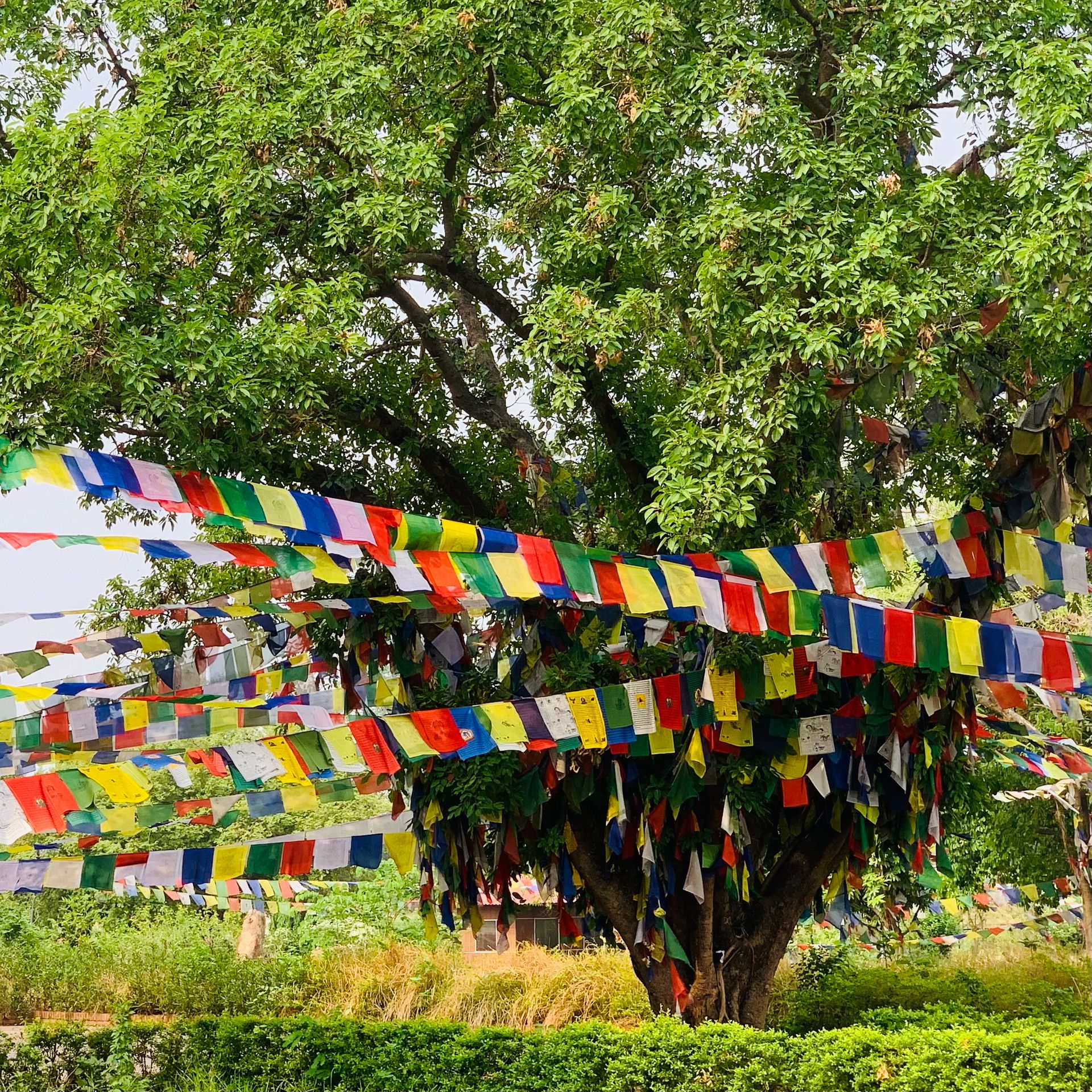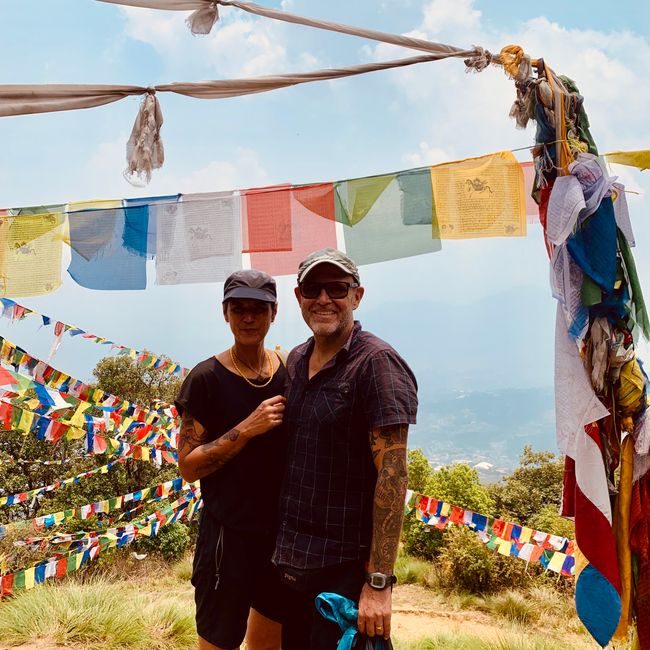
fortfahren und ankommen
vakantio.de/fortfahren-und-heimkommen
OM, hippies and a lot of hinterland - India at the turn of the year 2023/24
வெளியிடப்பட்டது: 12.01.2024
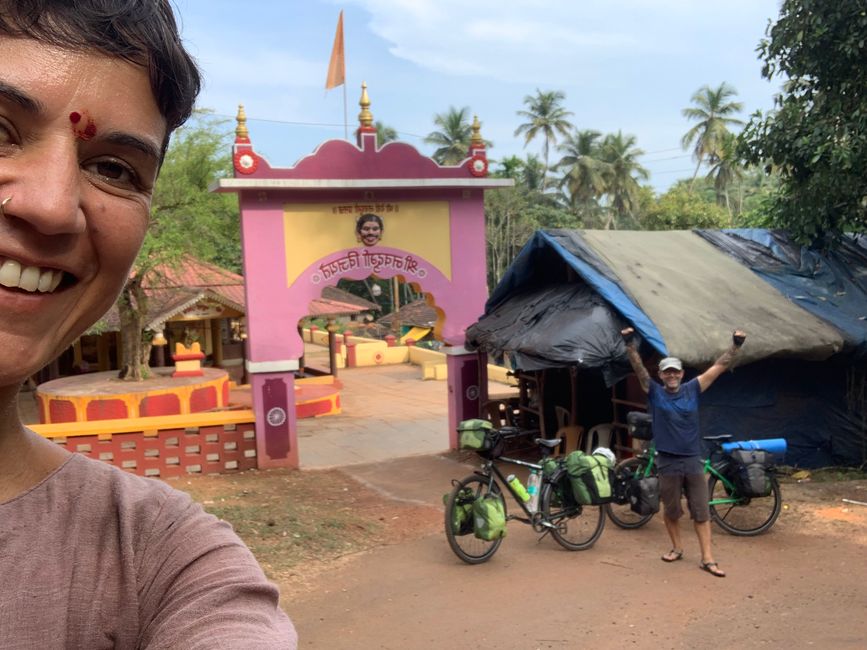
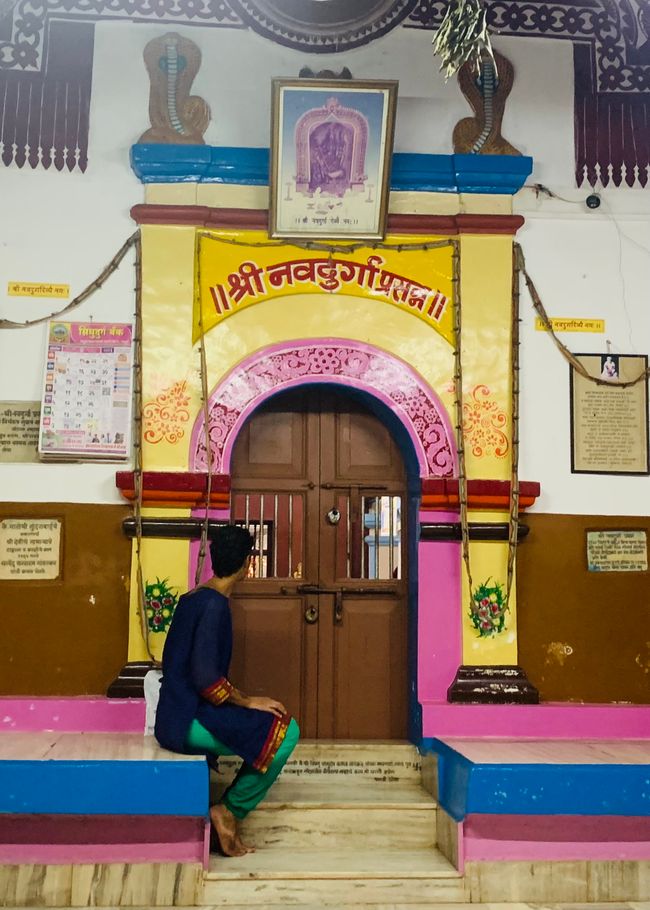
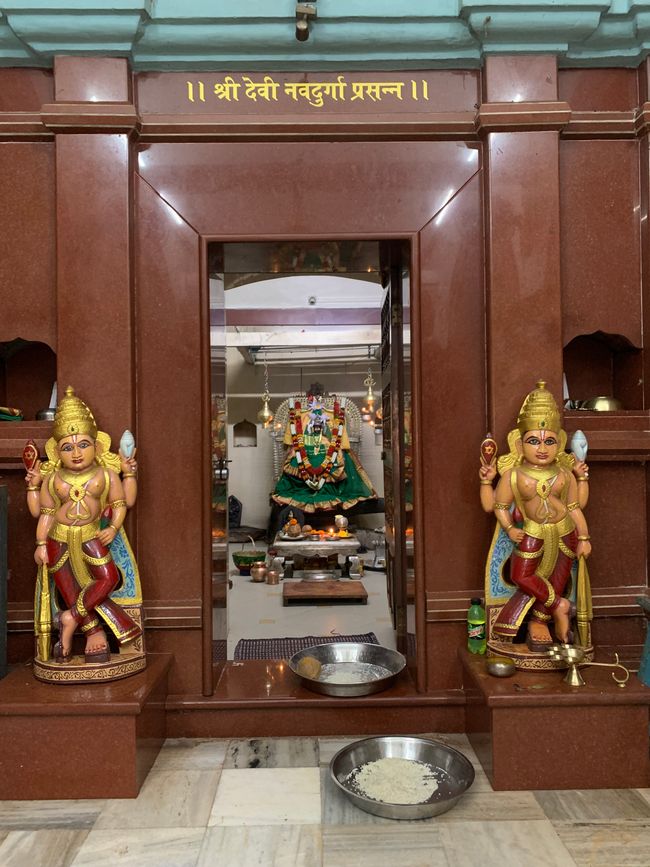
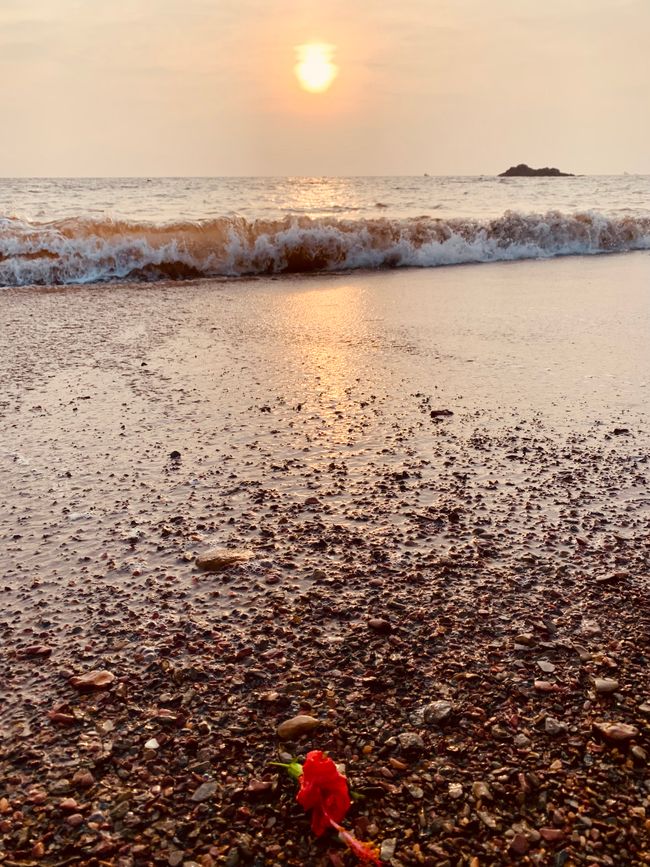
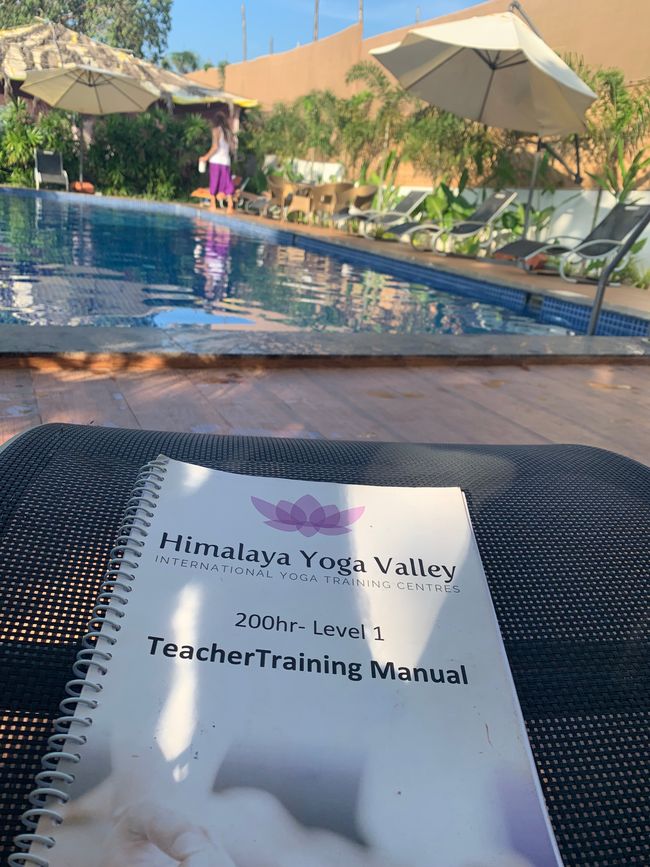
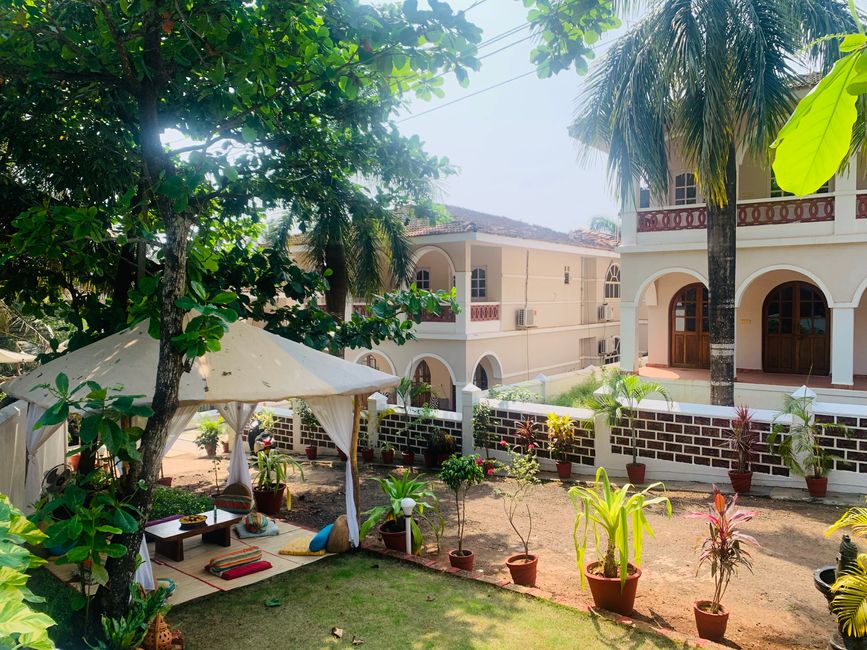
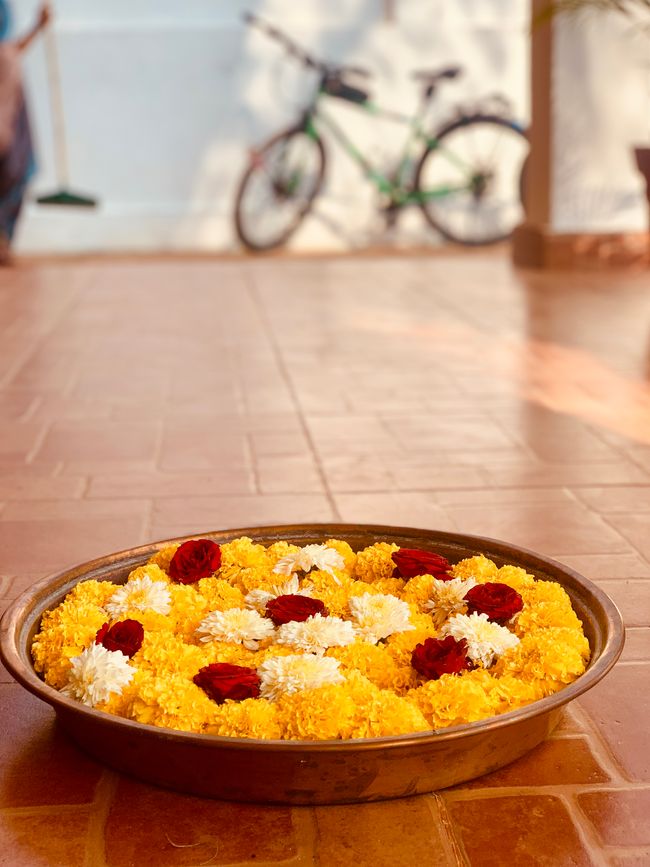

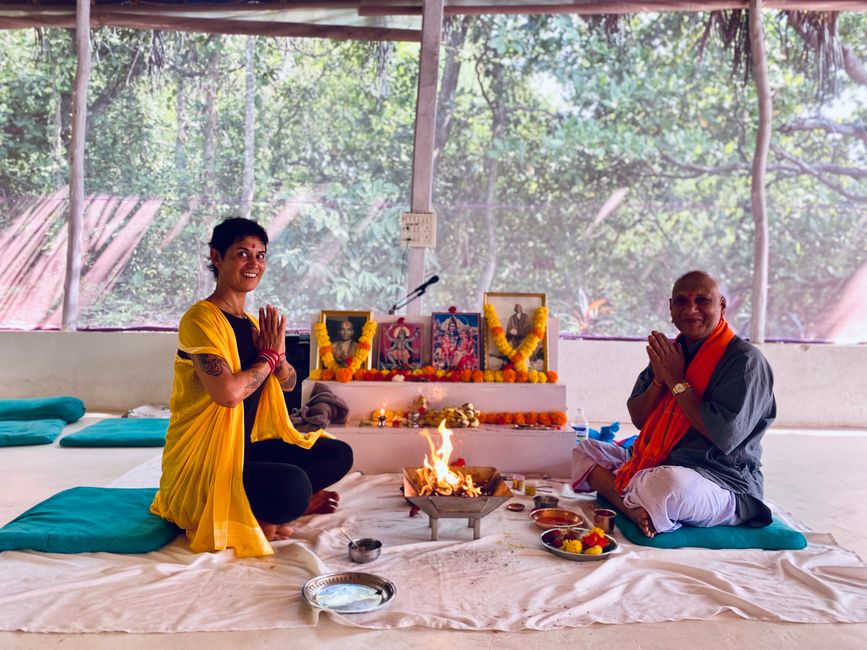
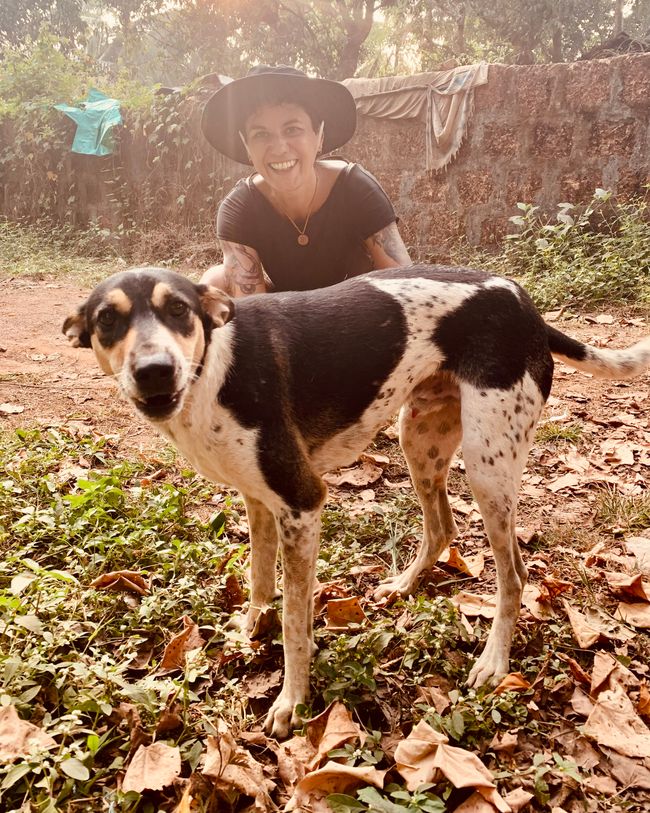
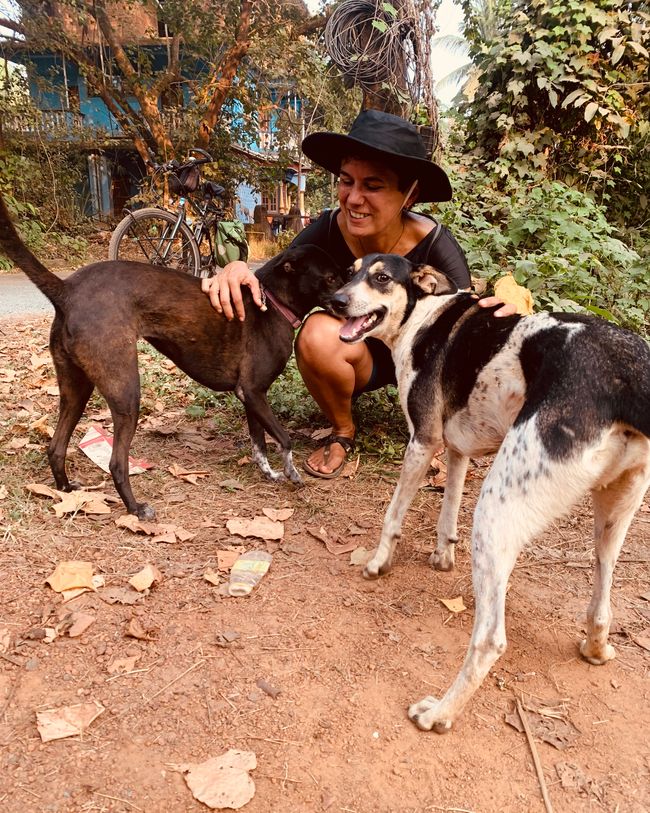
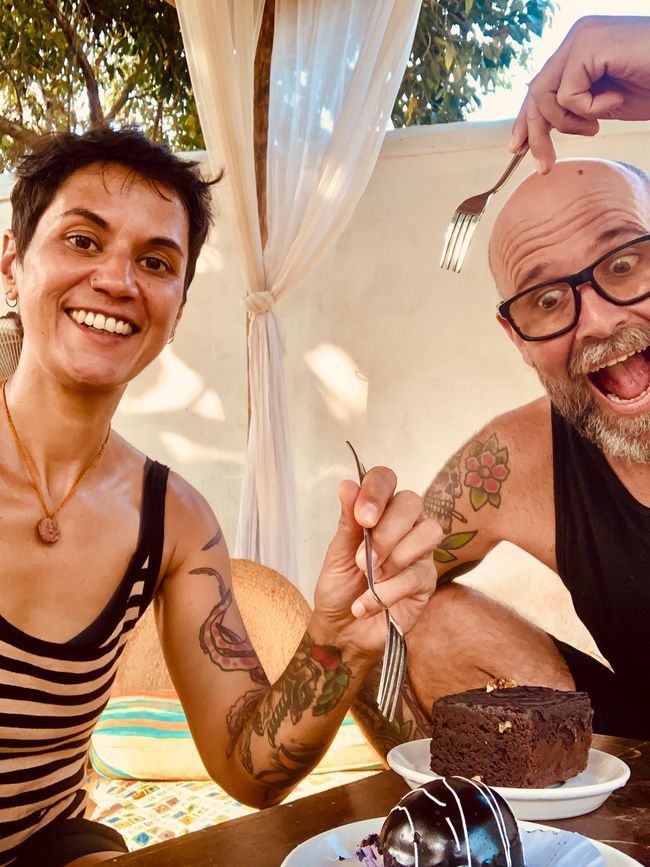
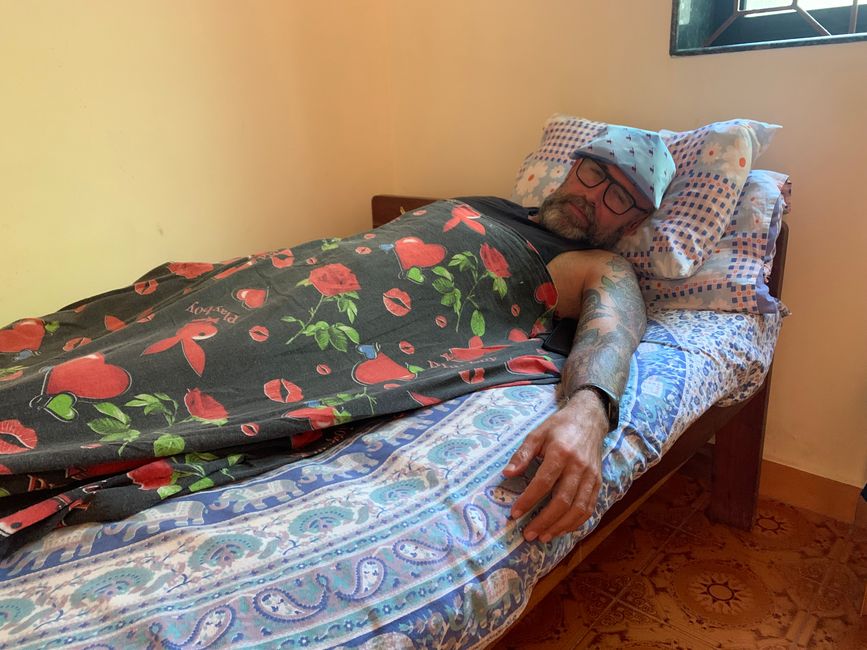
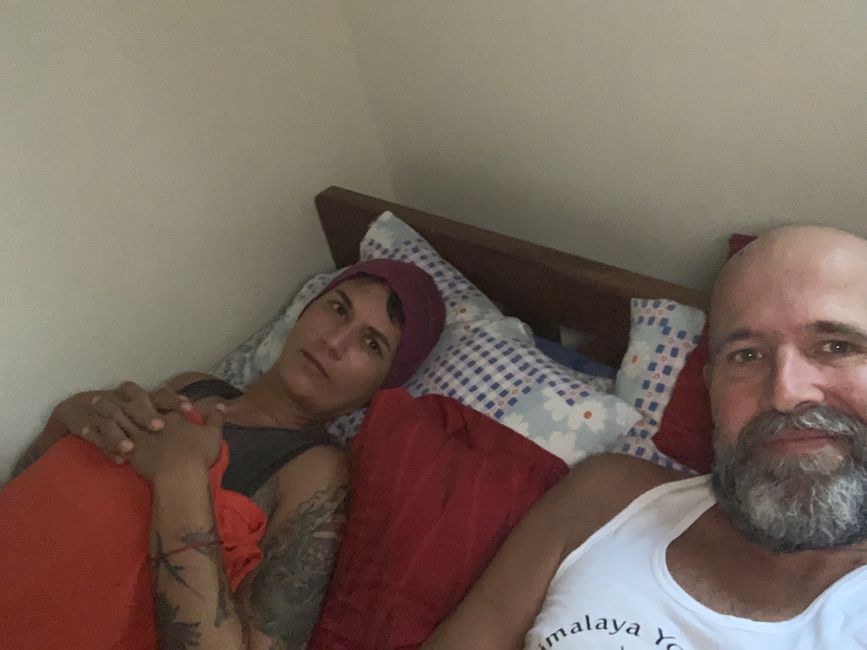
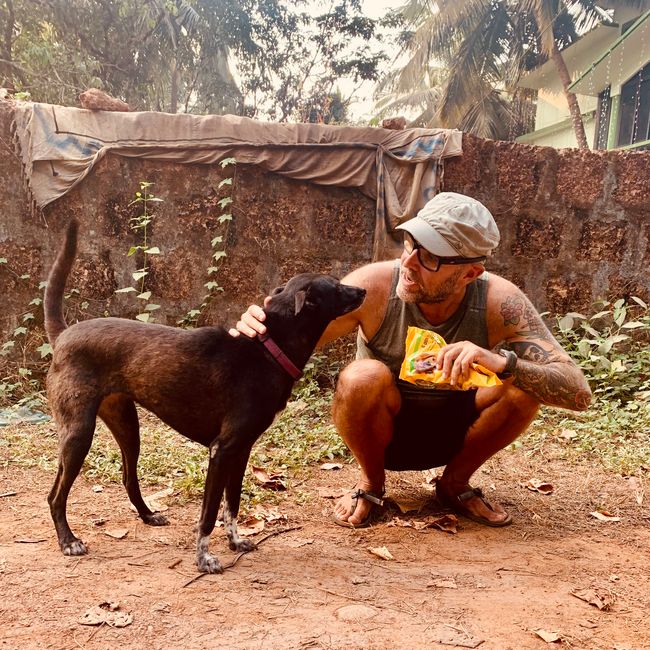
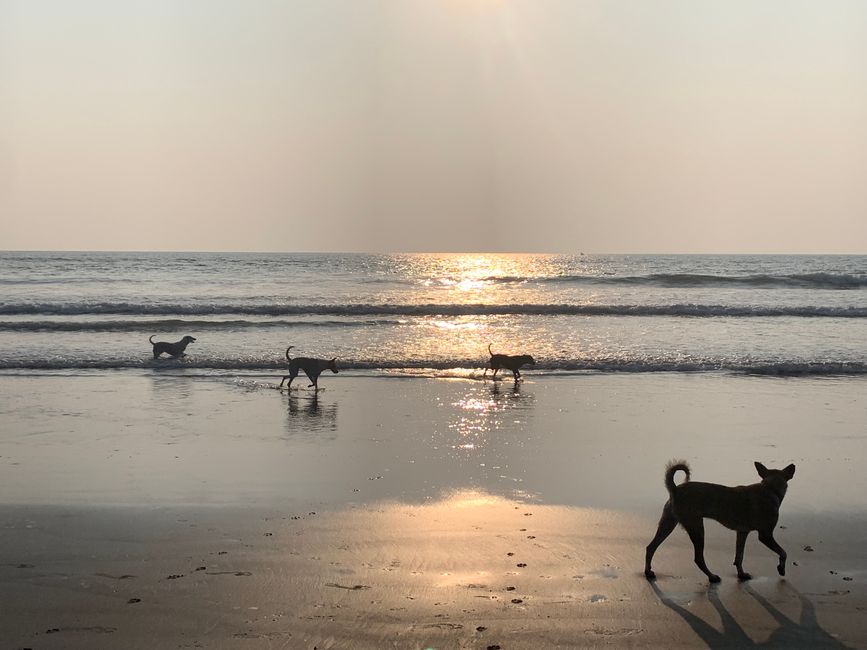
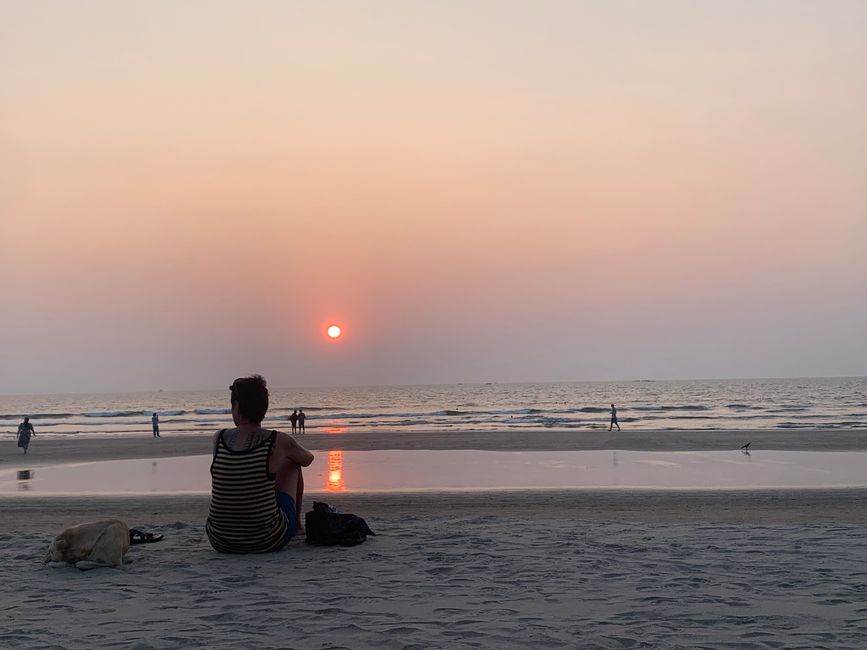
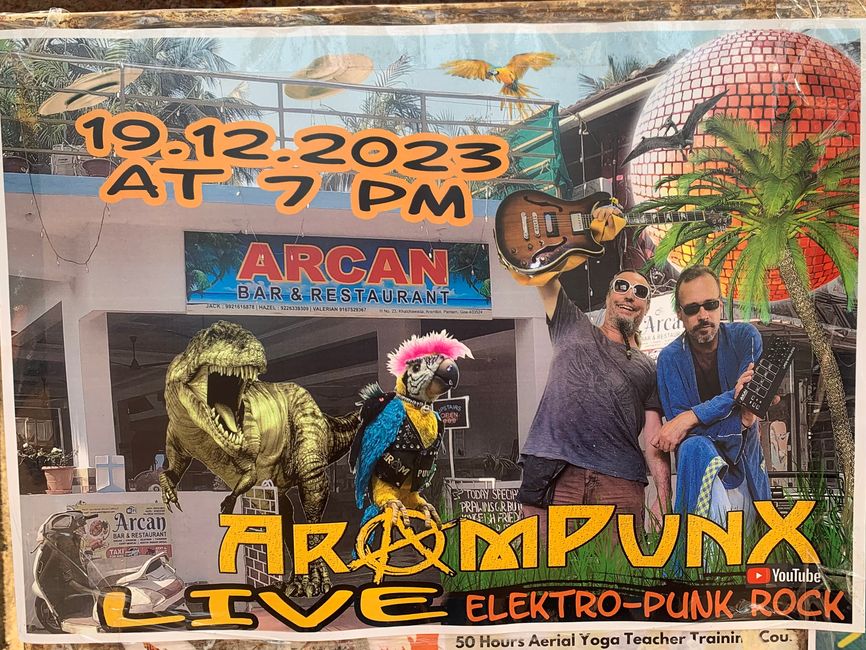
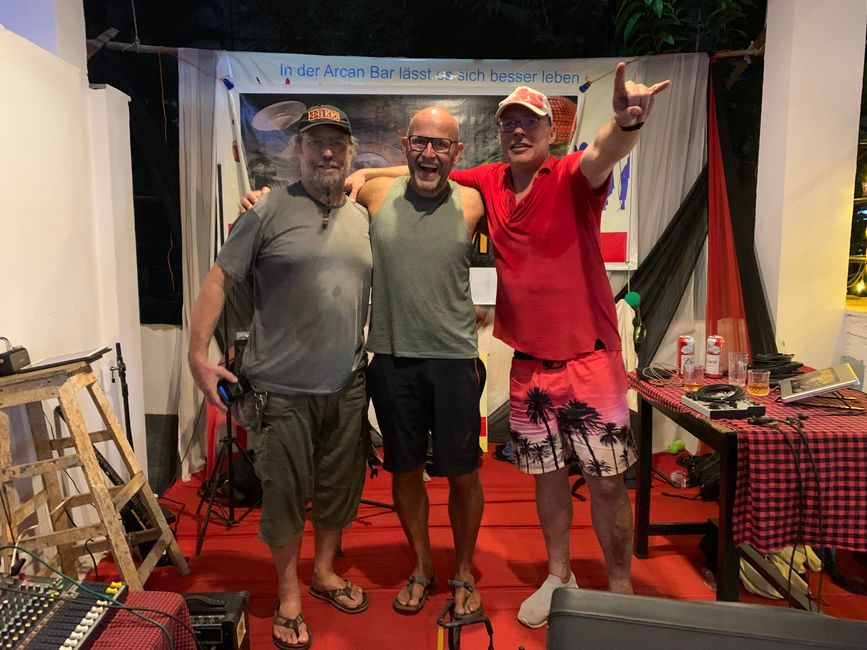
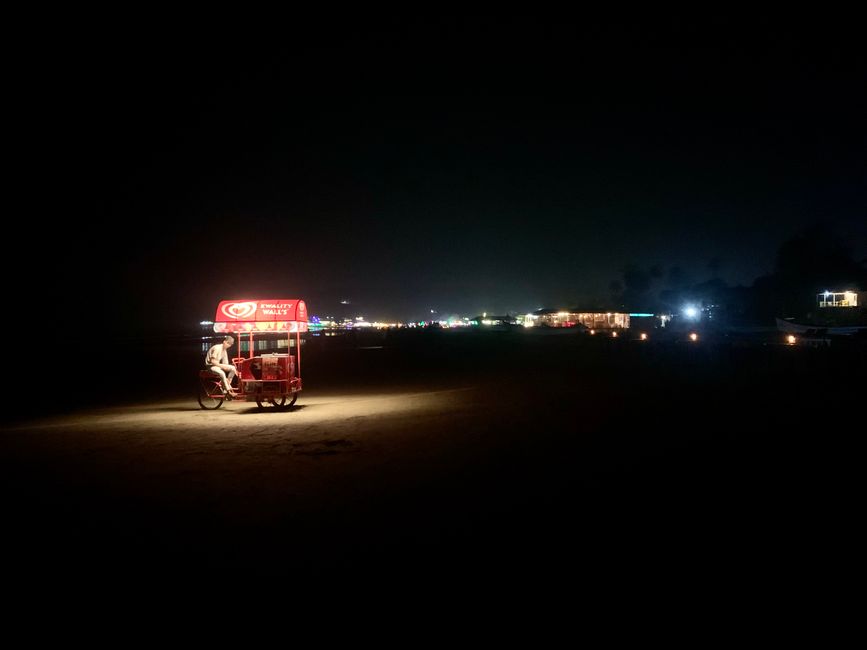
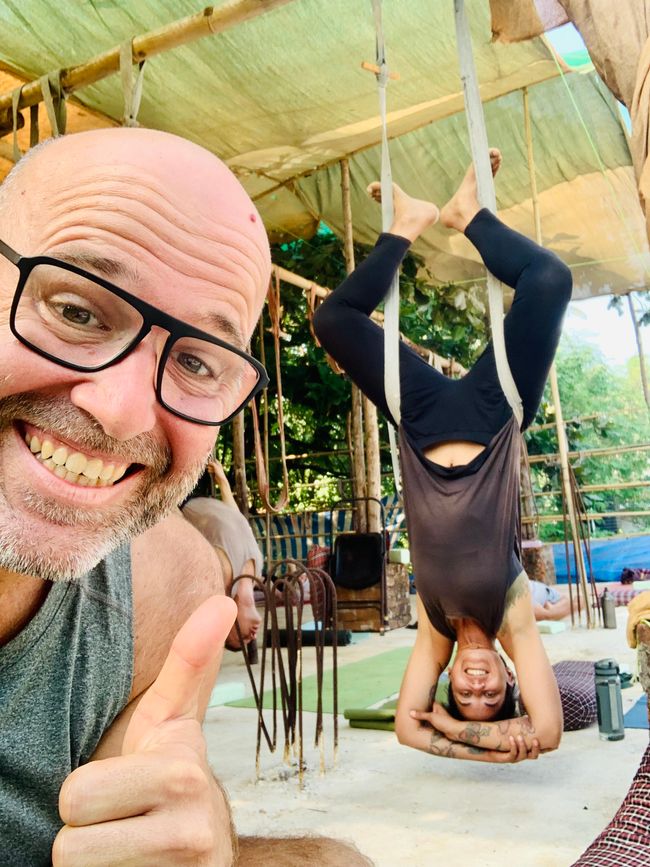
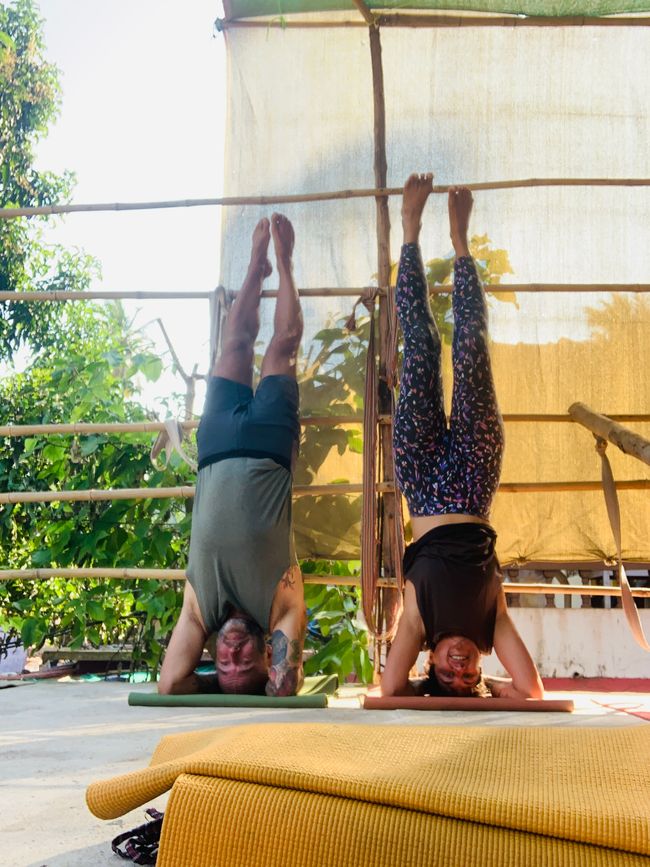
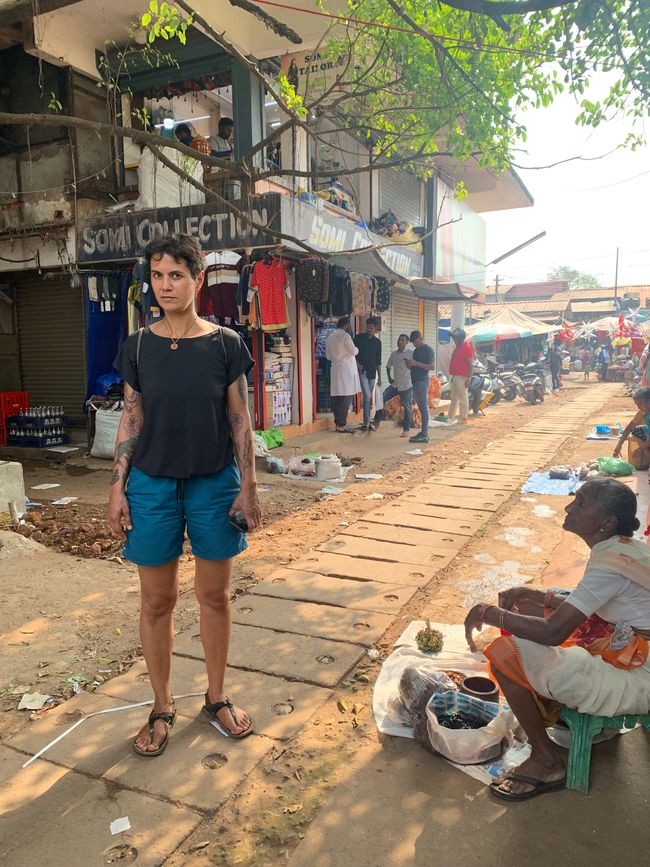
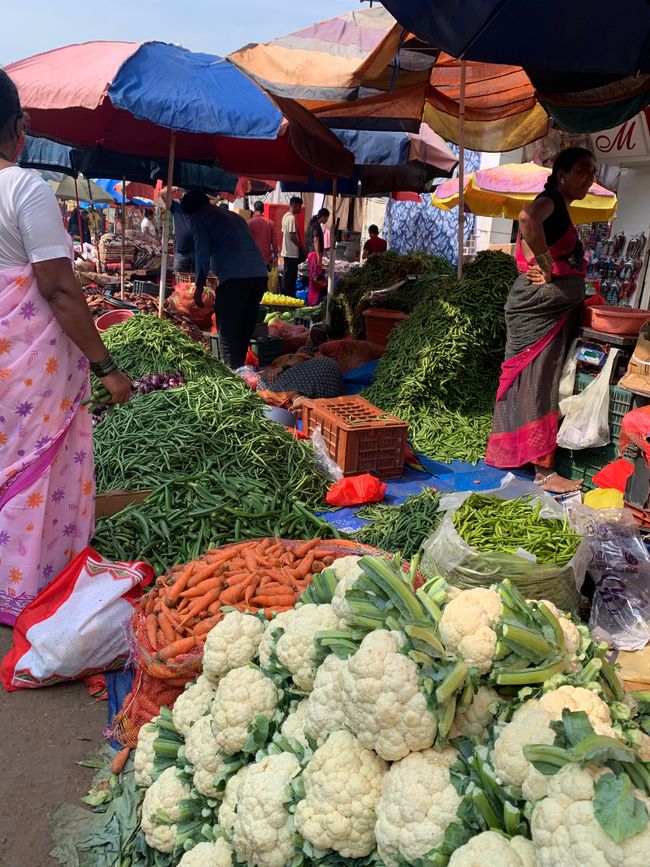
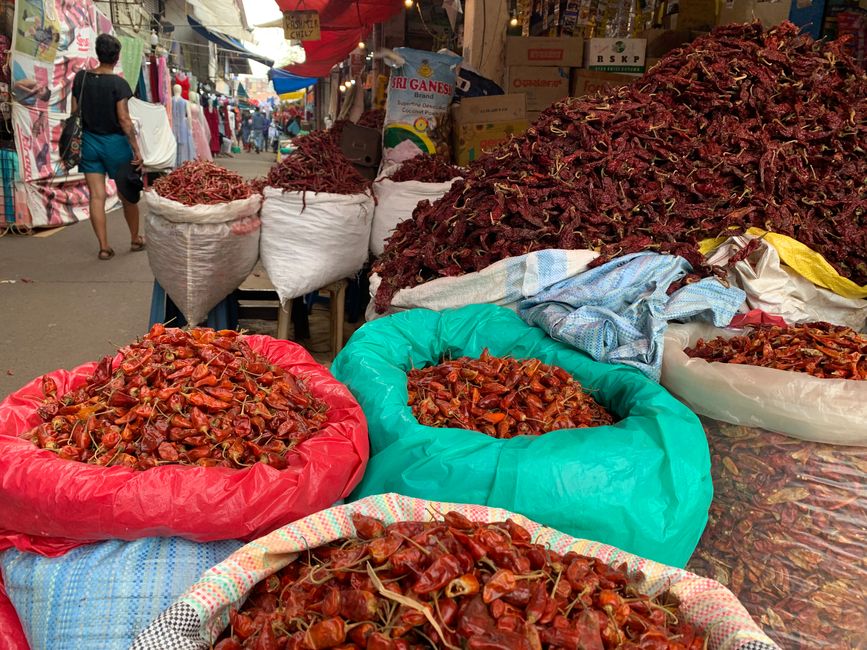
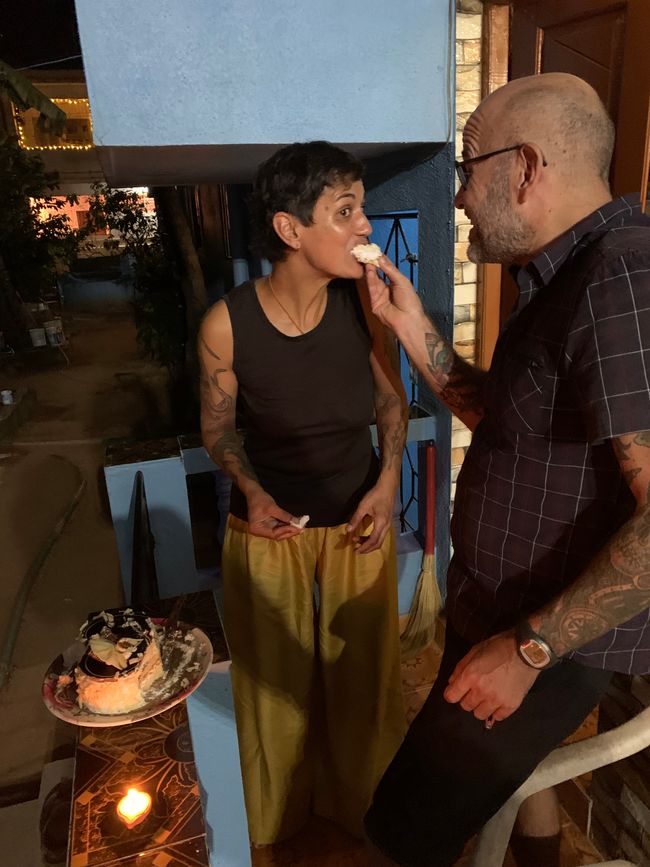


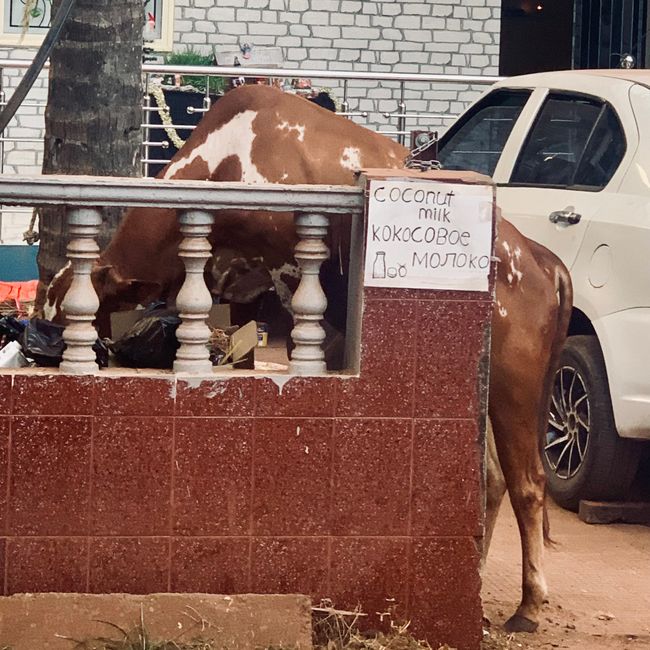

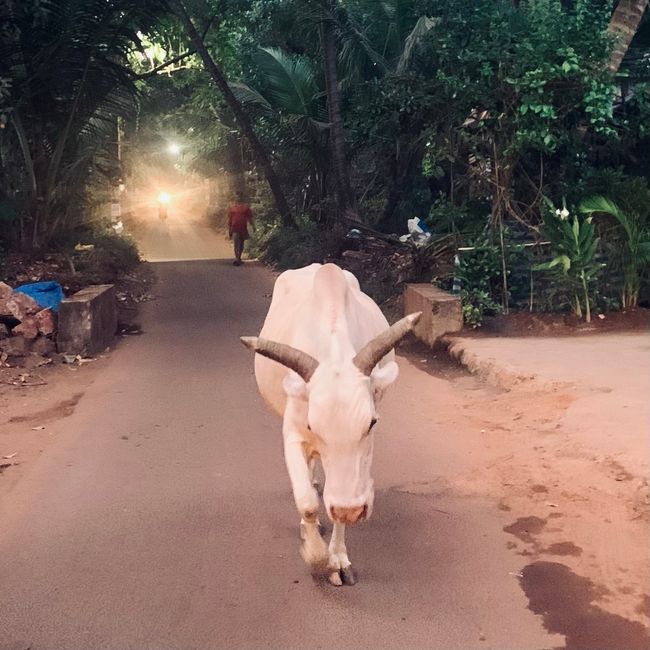
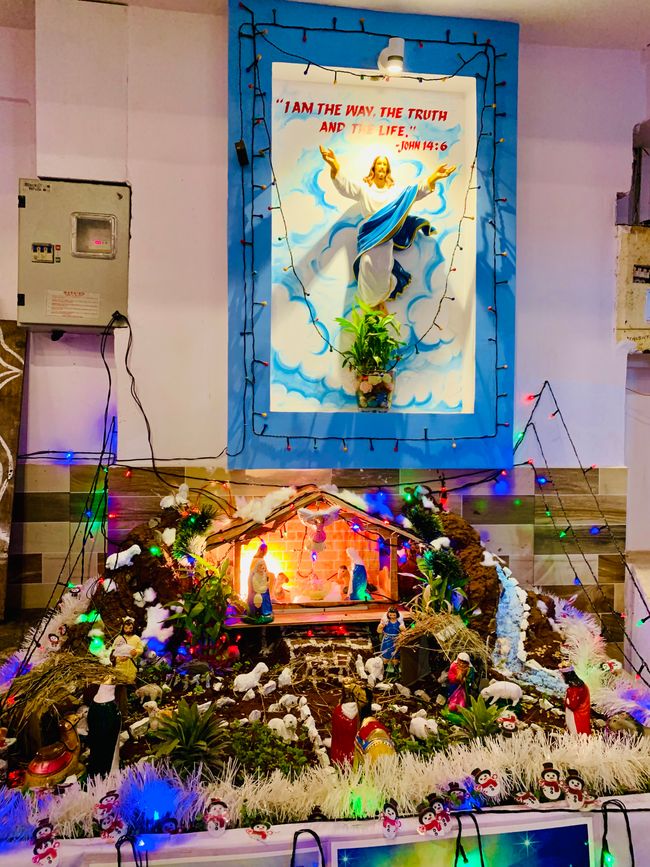

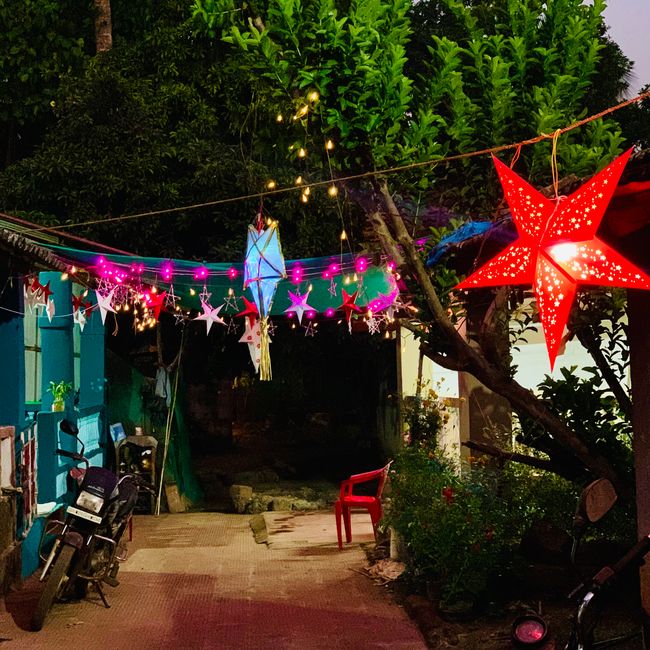
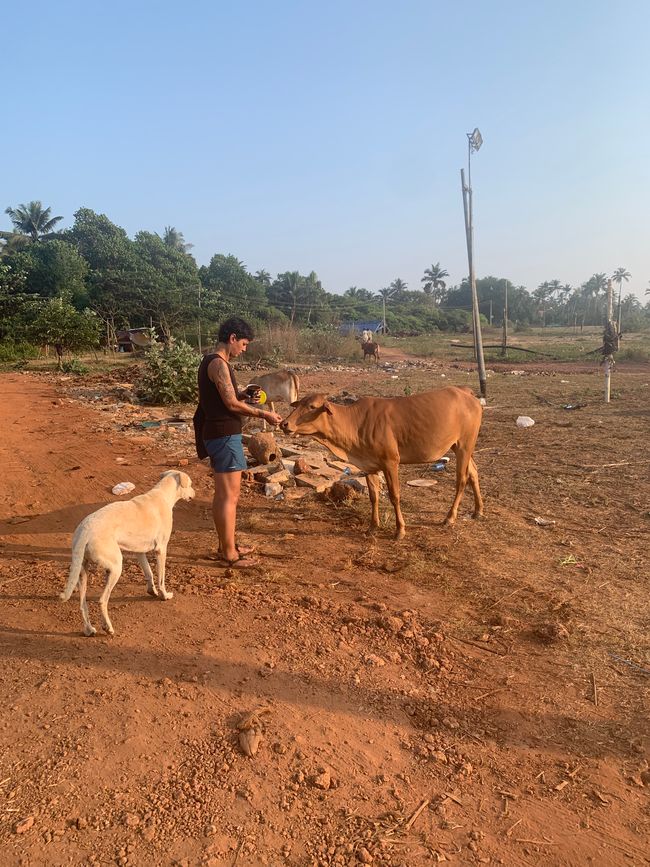
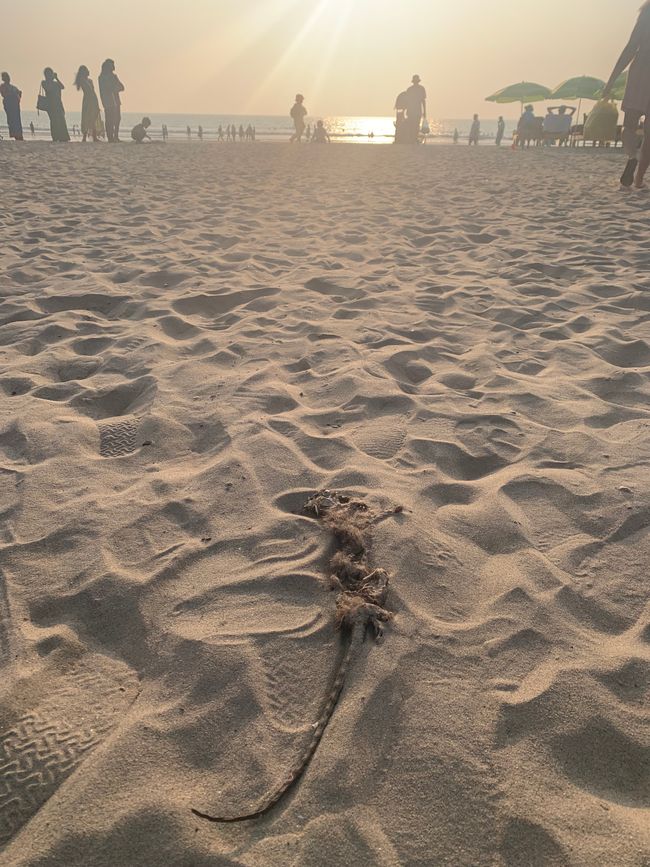
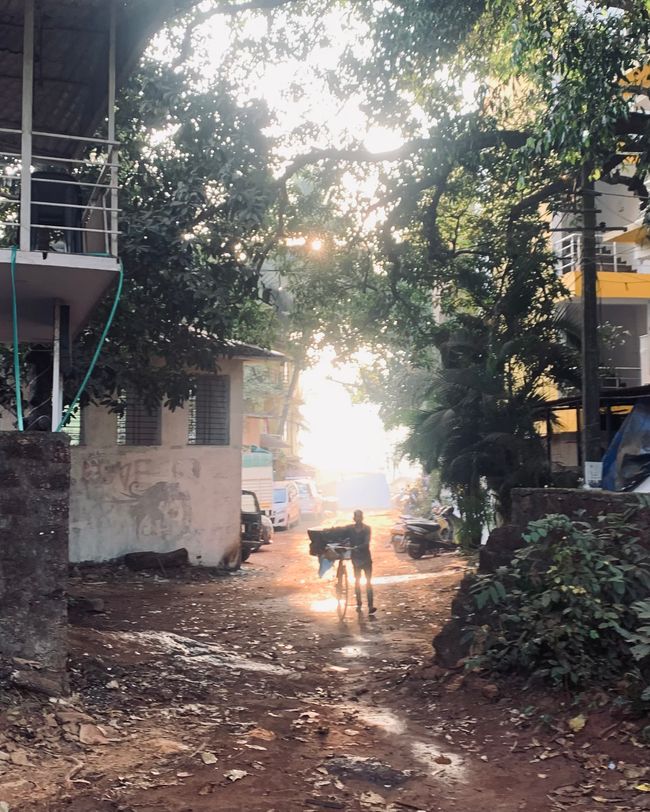
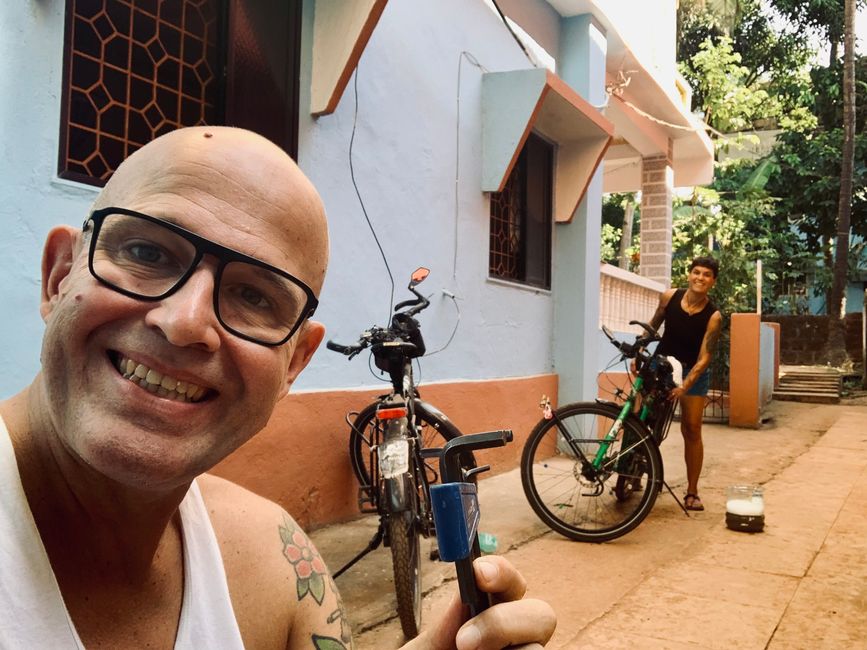
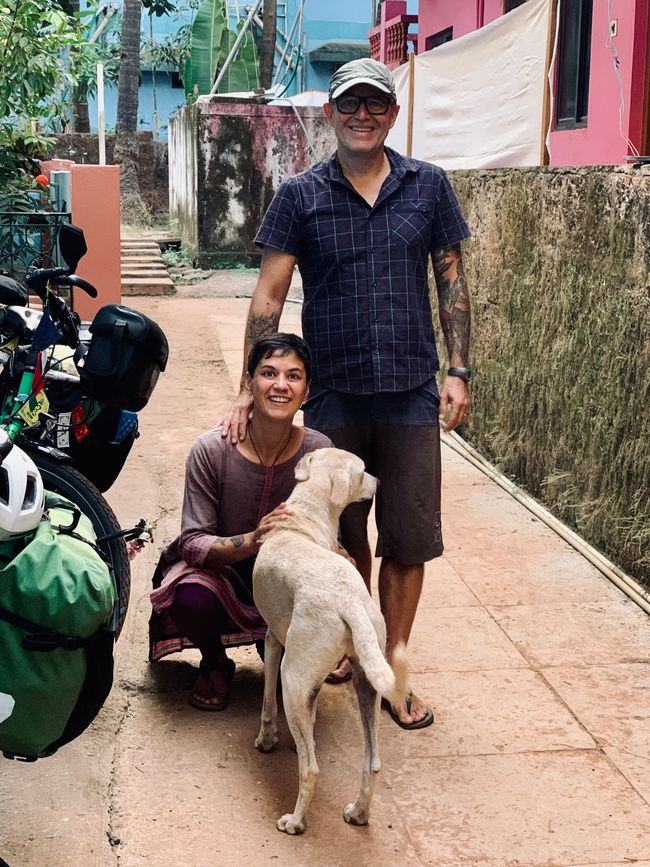
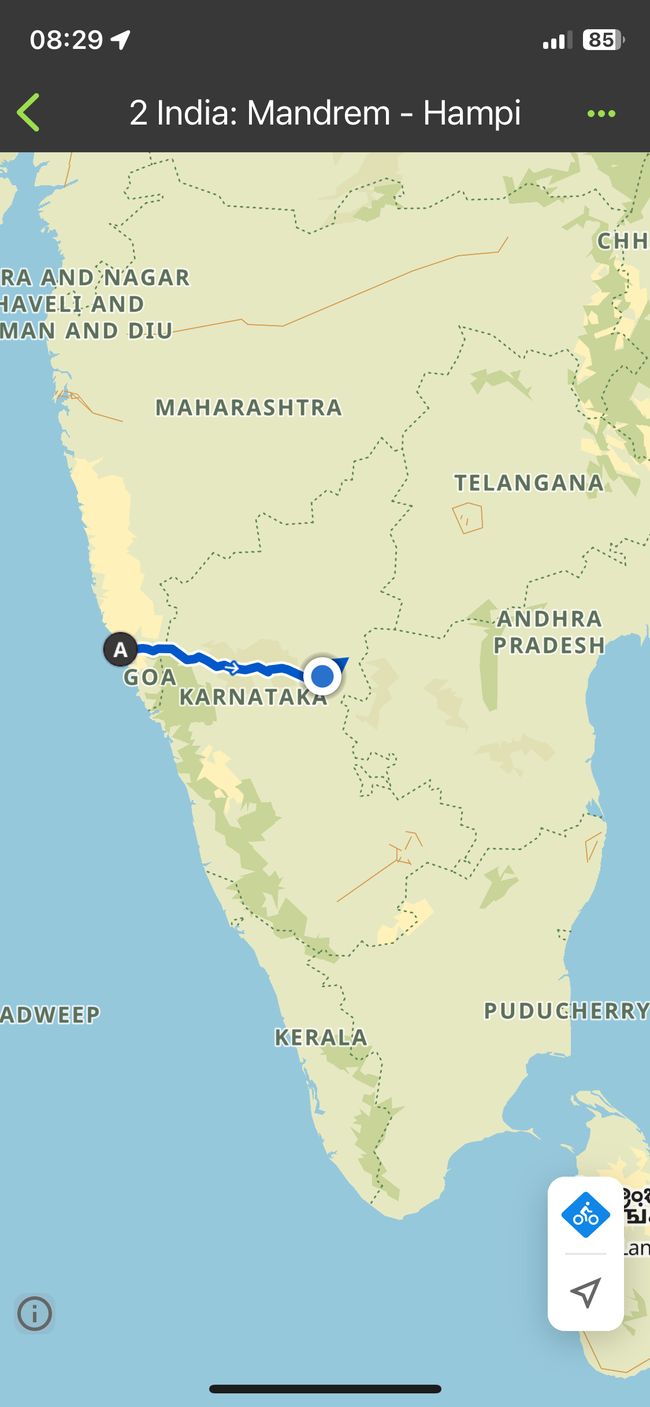
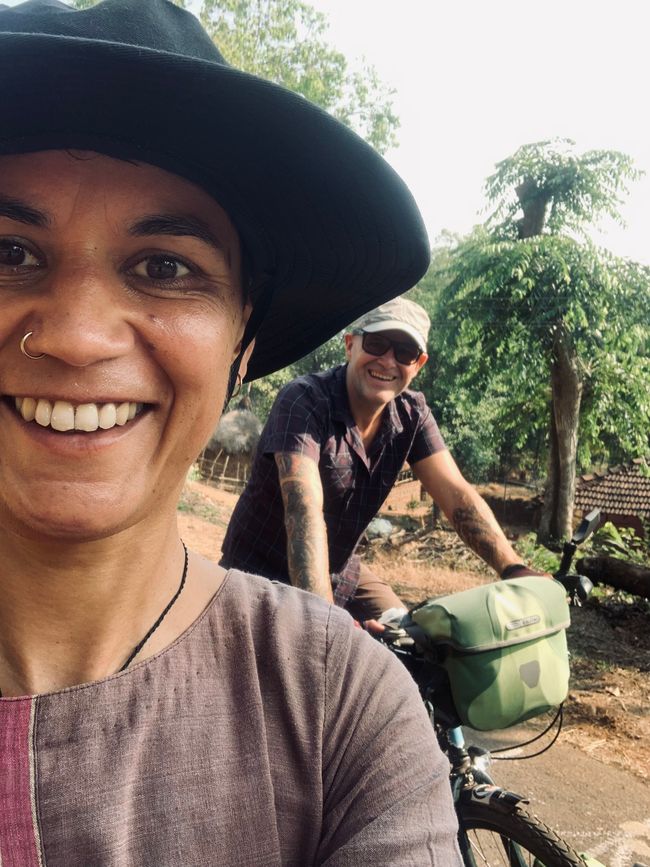
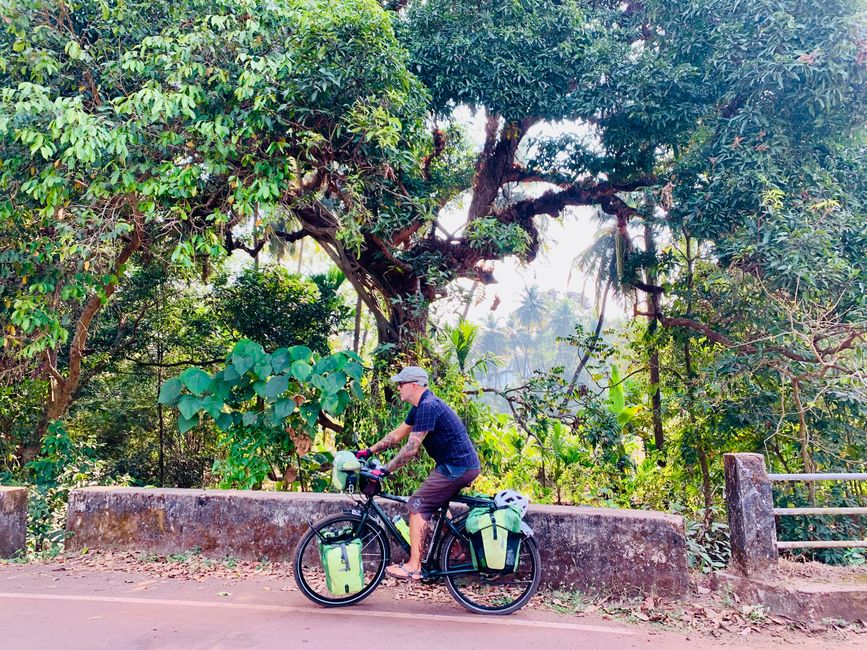
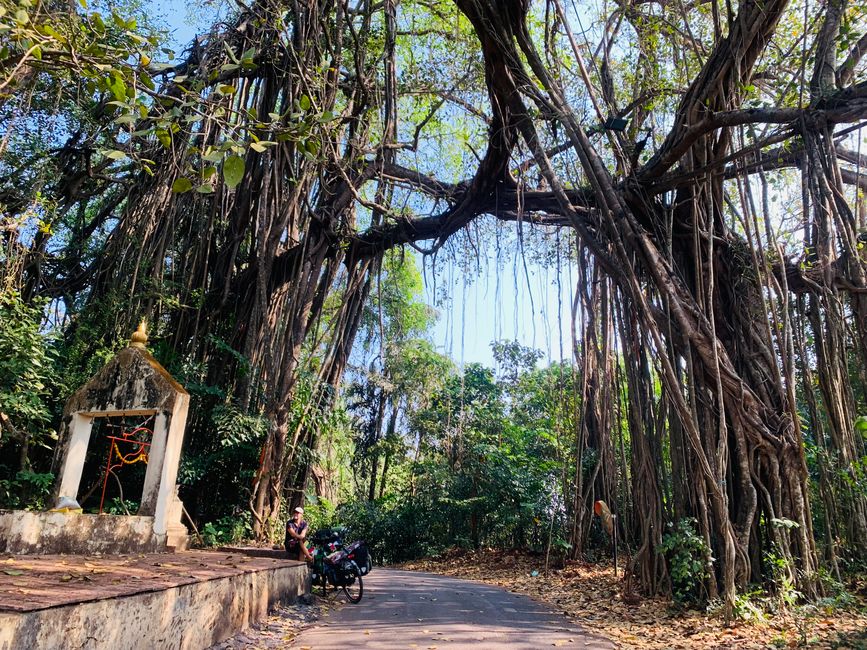
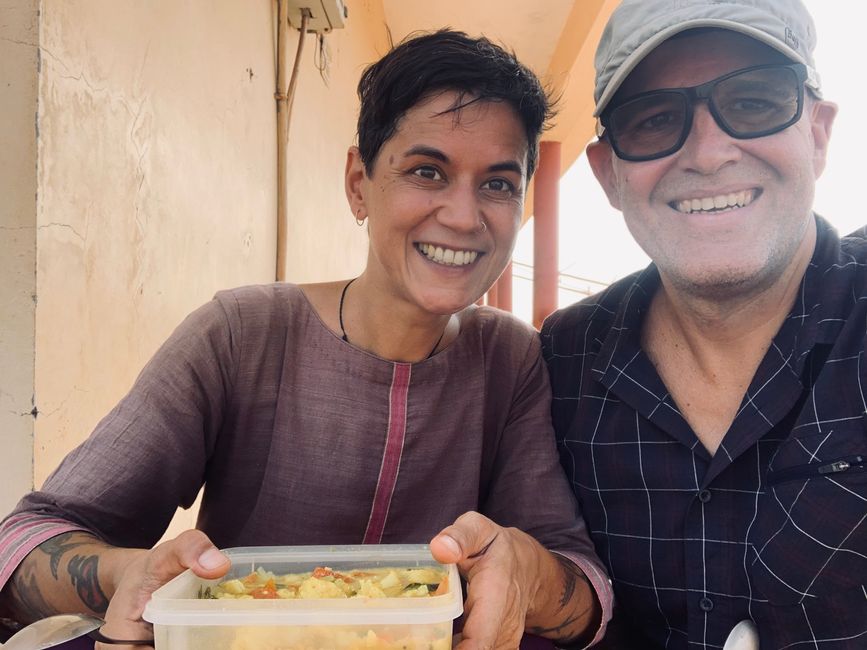
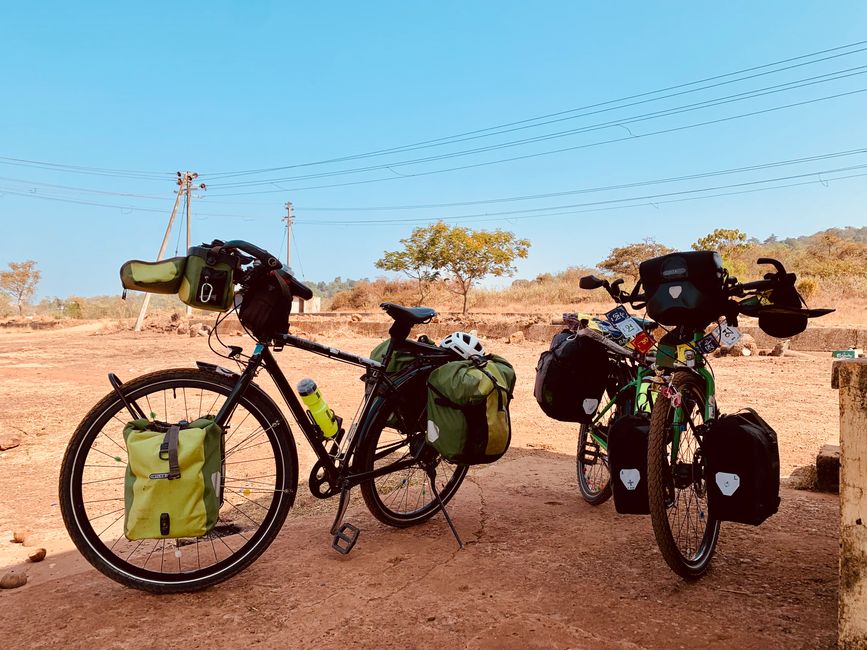
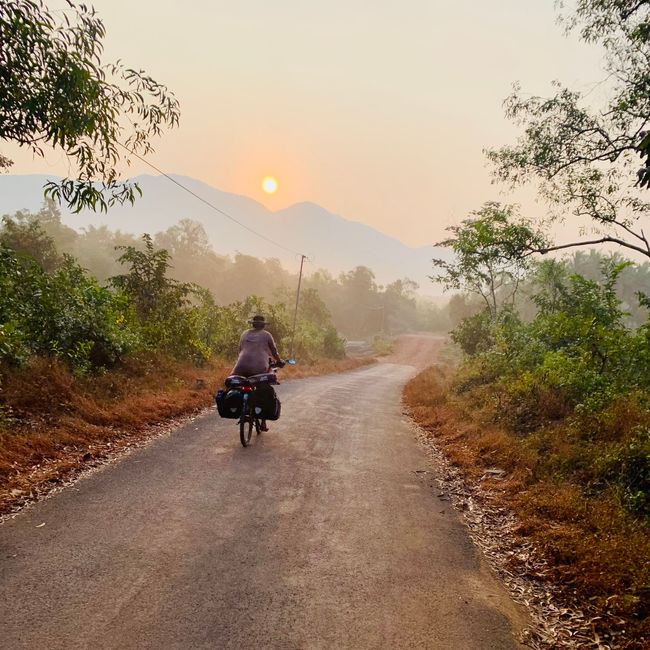

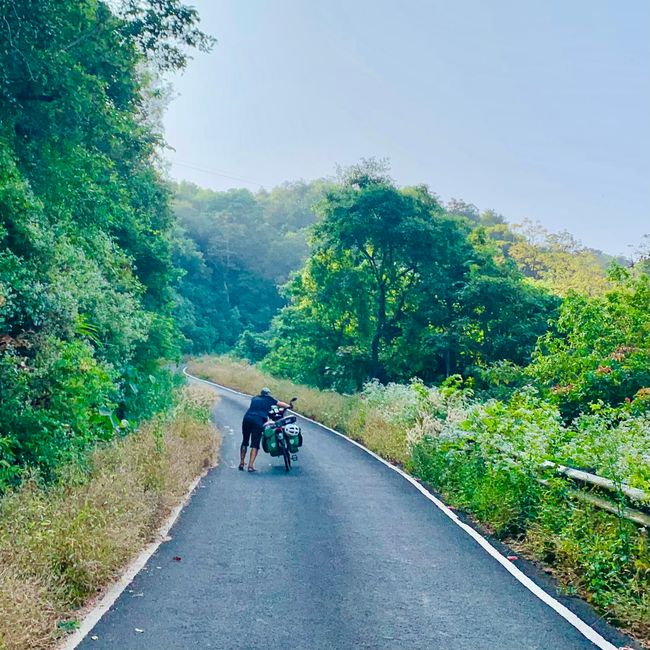
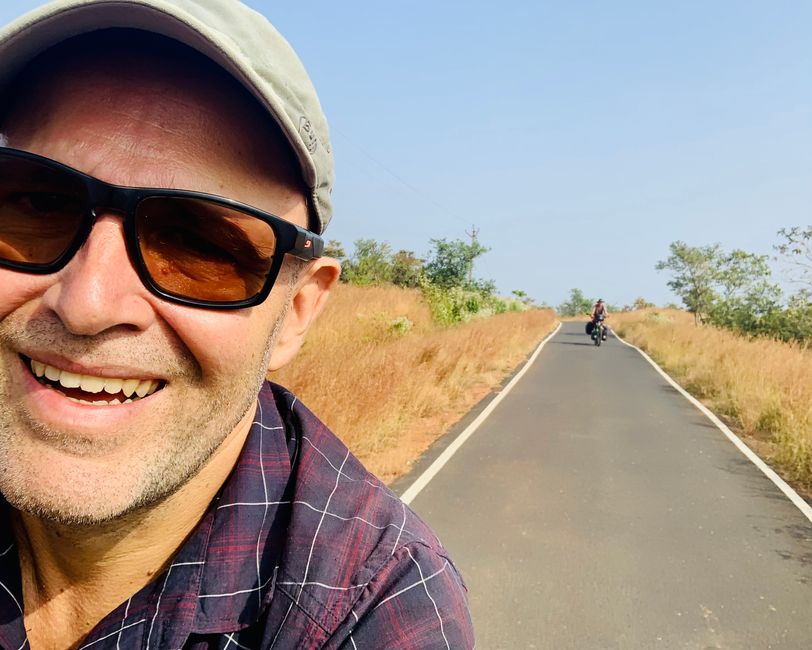

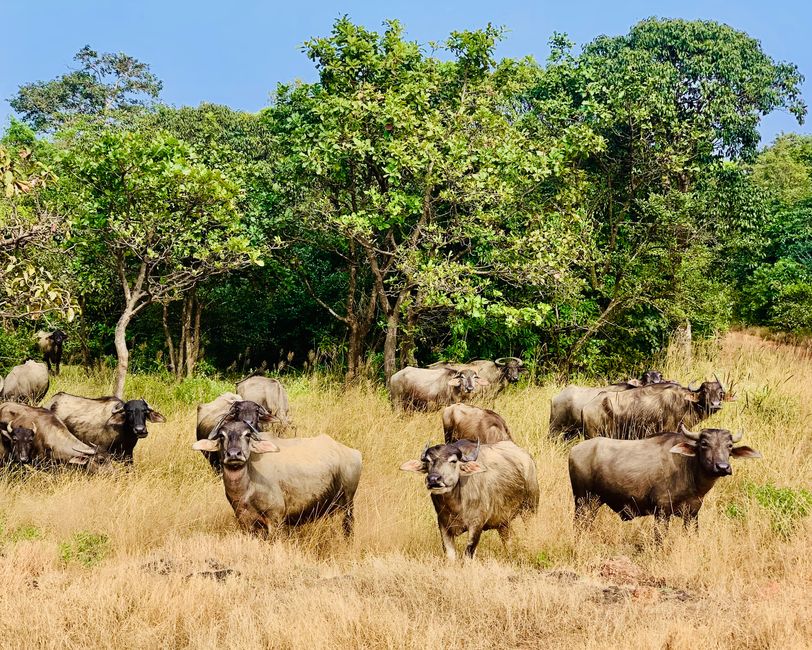
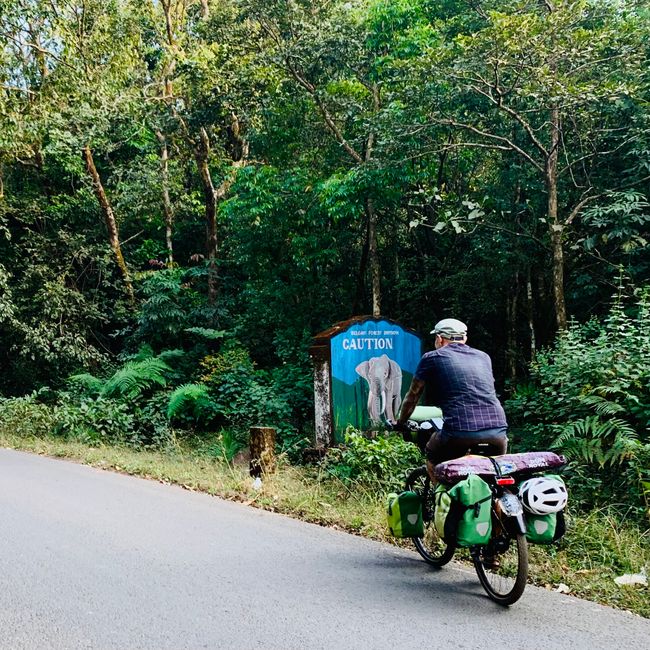

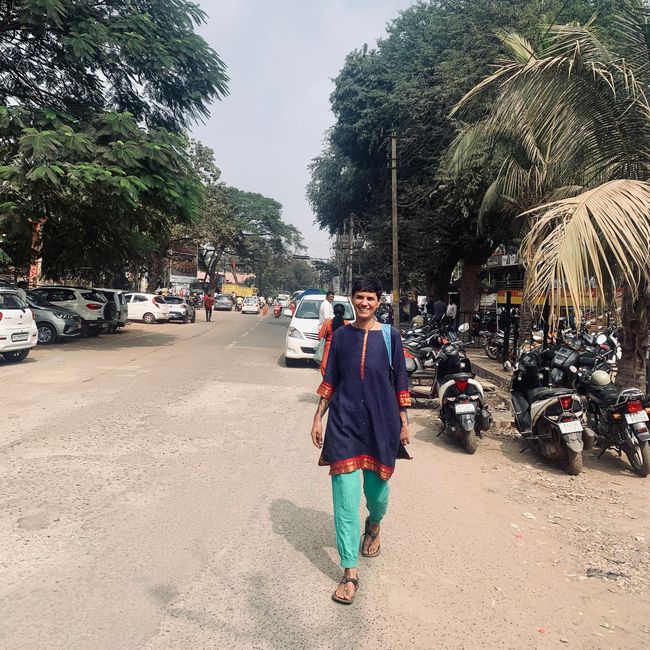
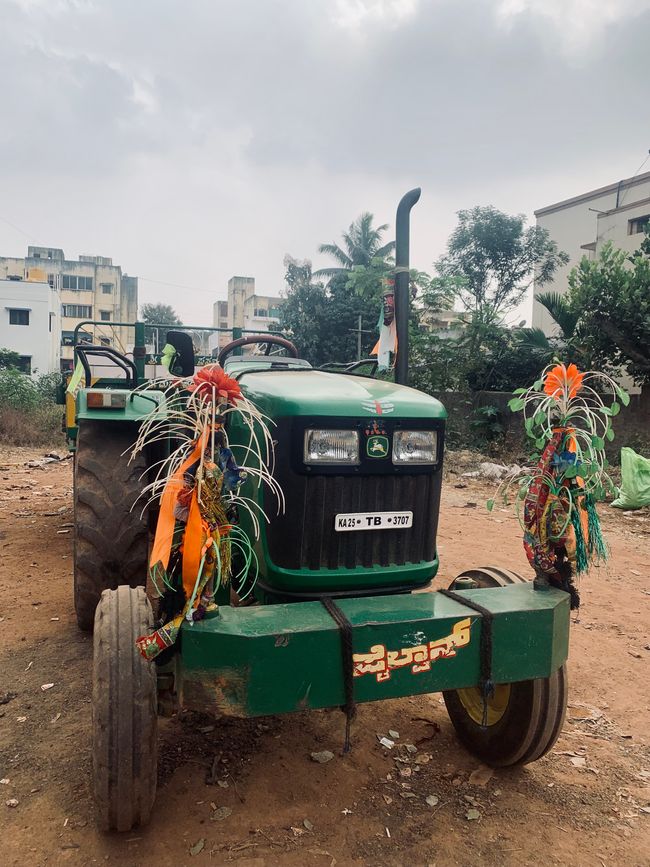
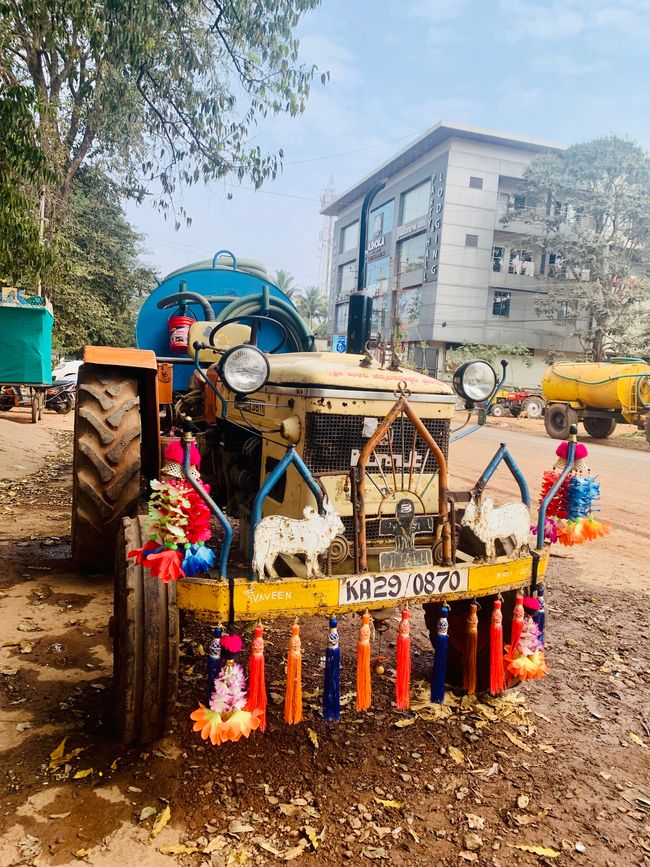
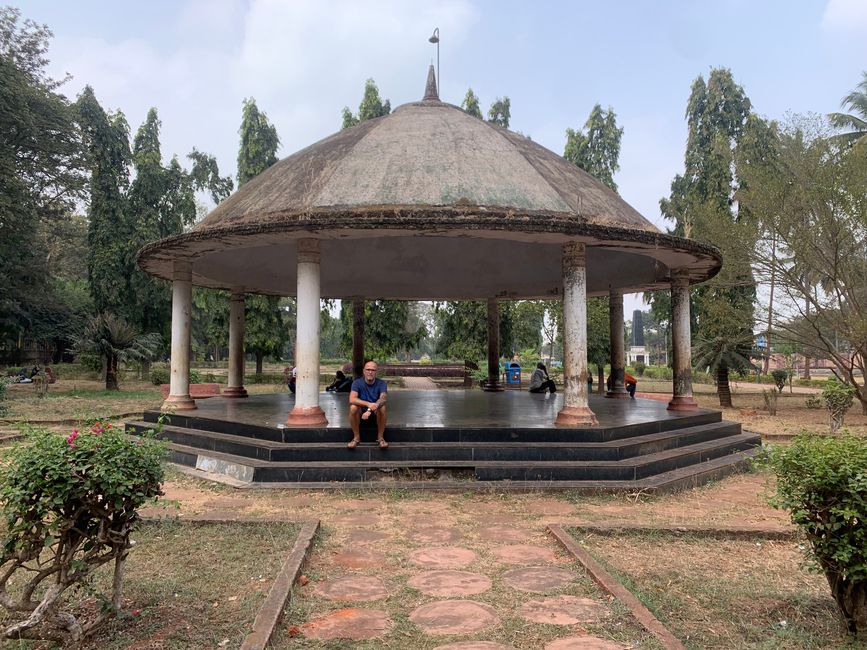
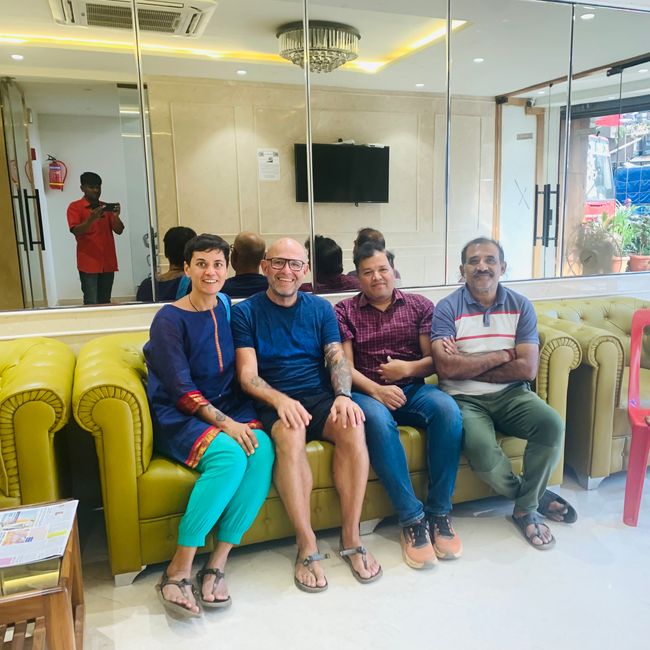
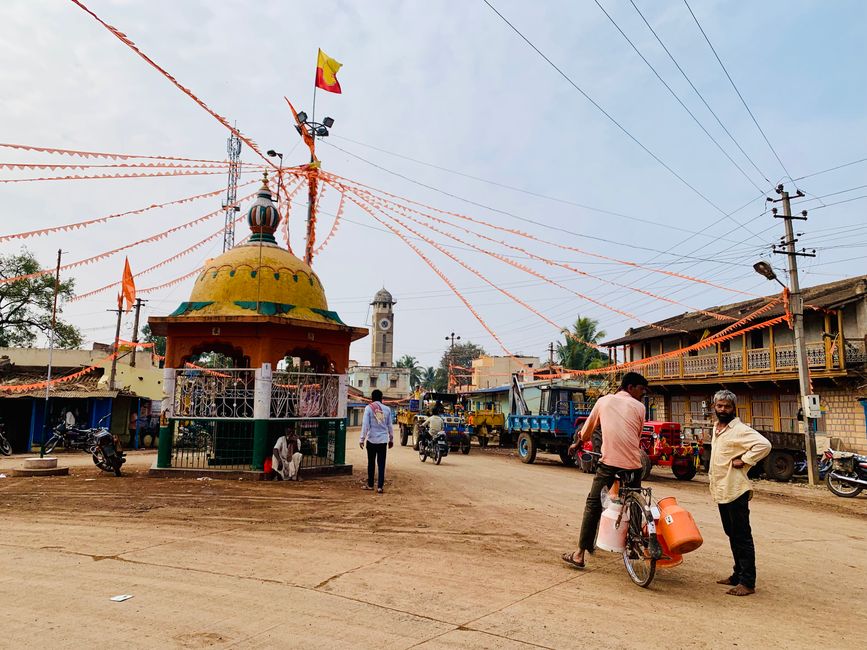
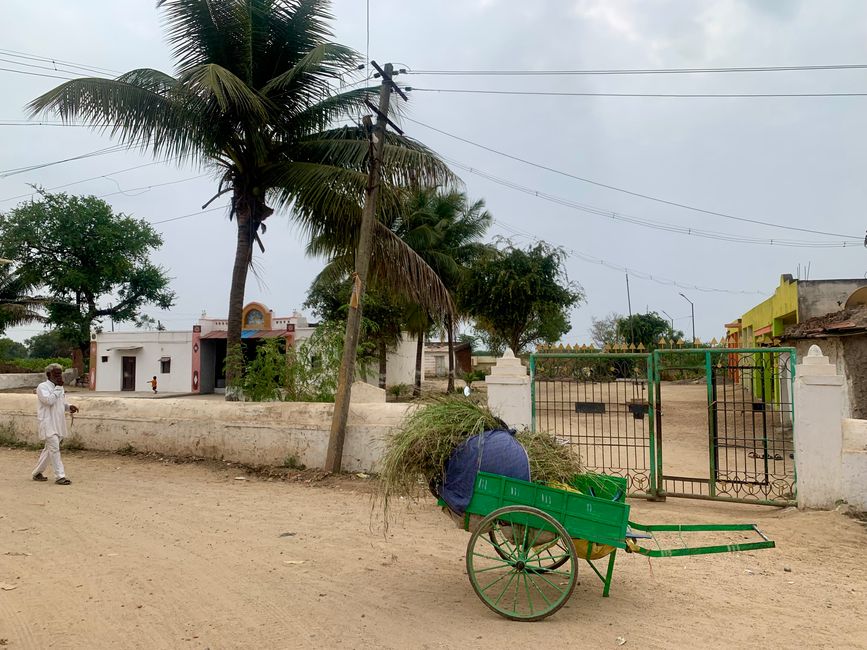
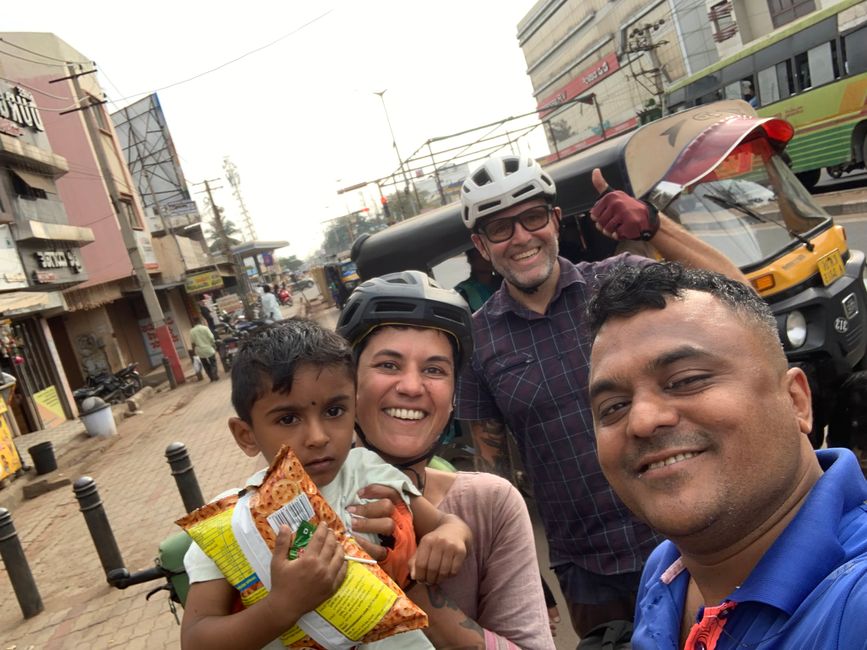
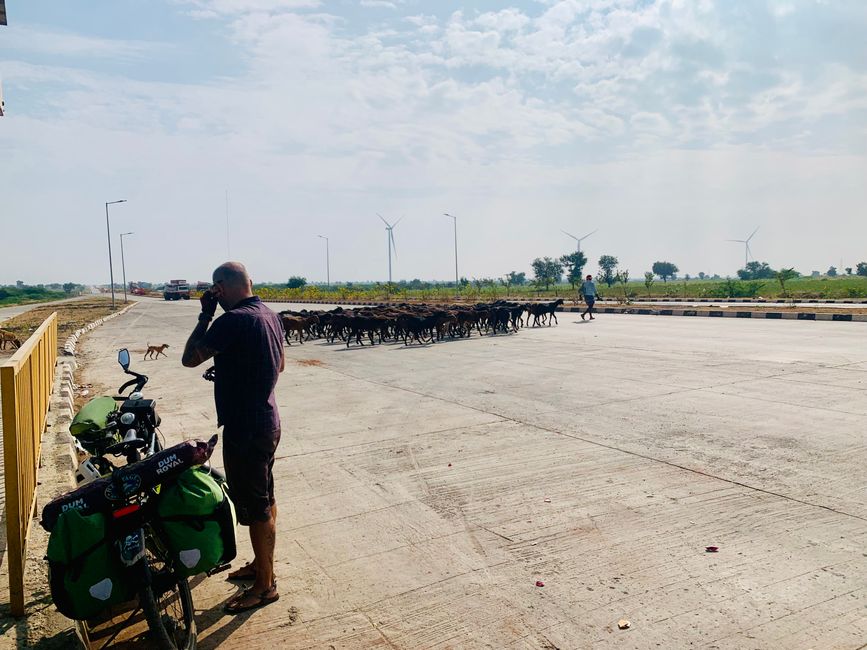
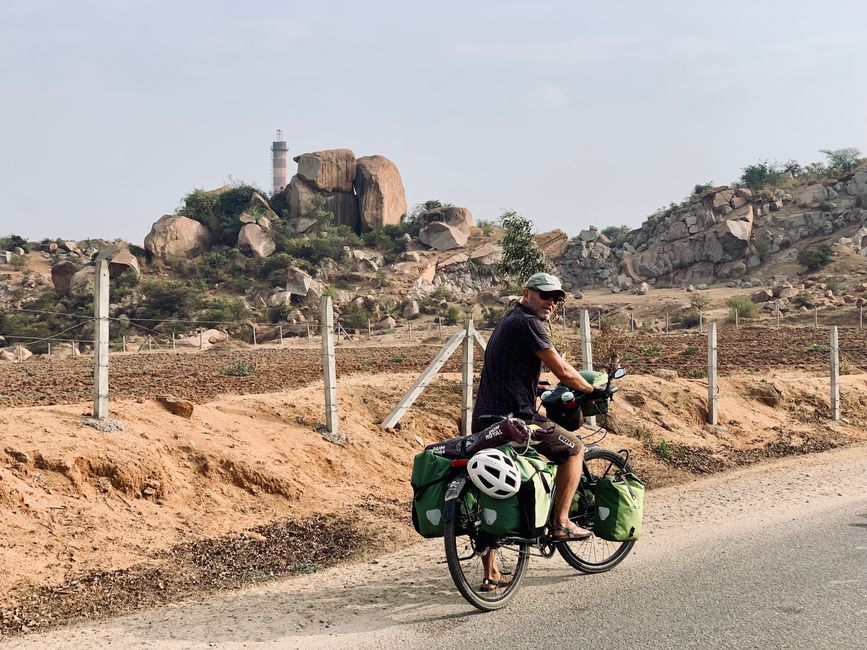

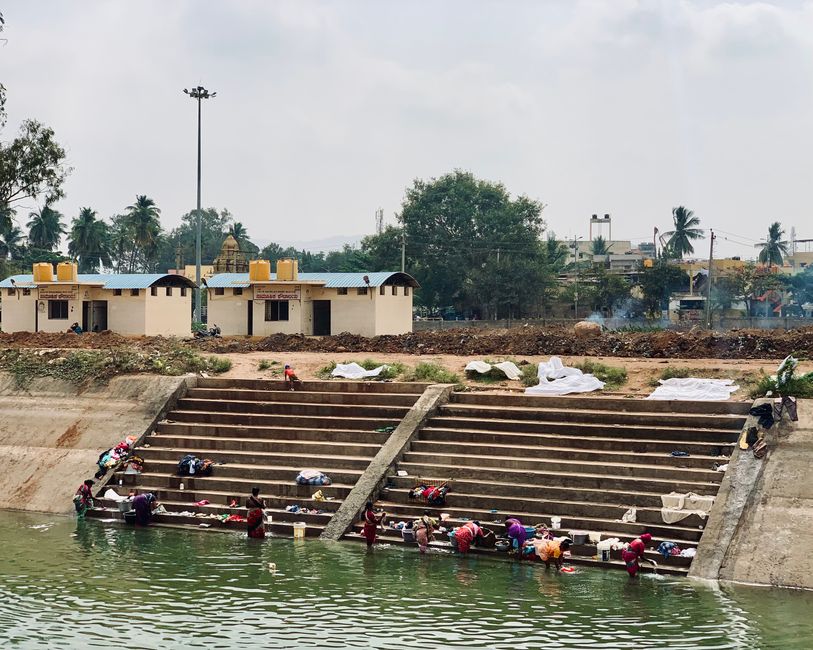
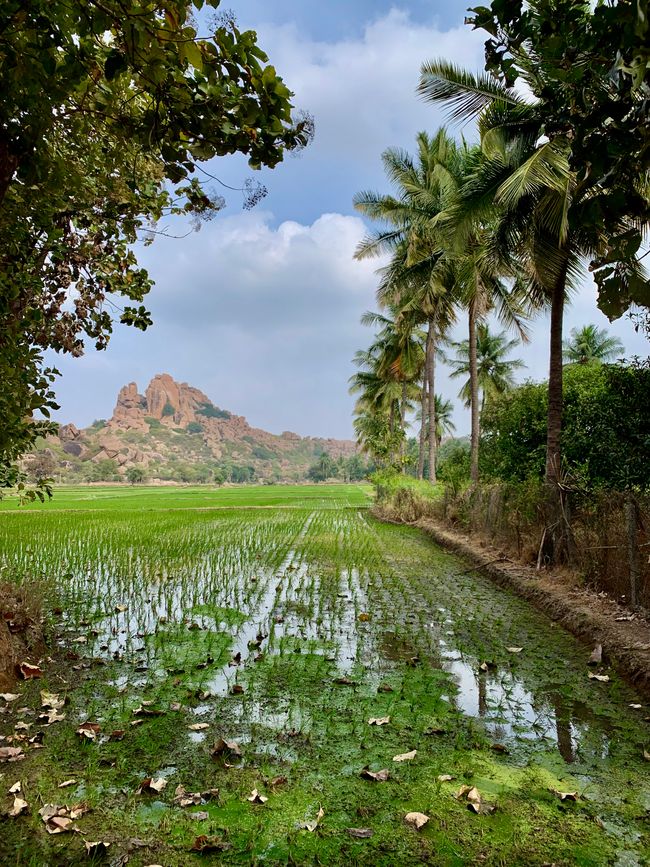
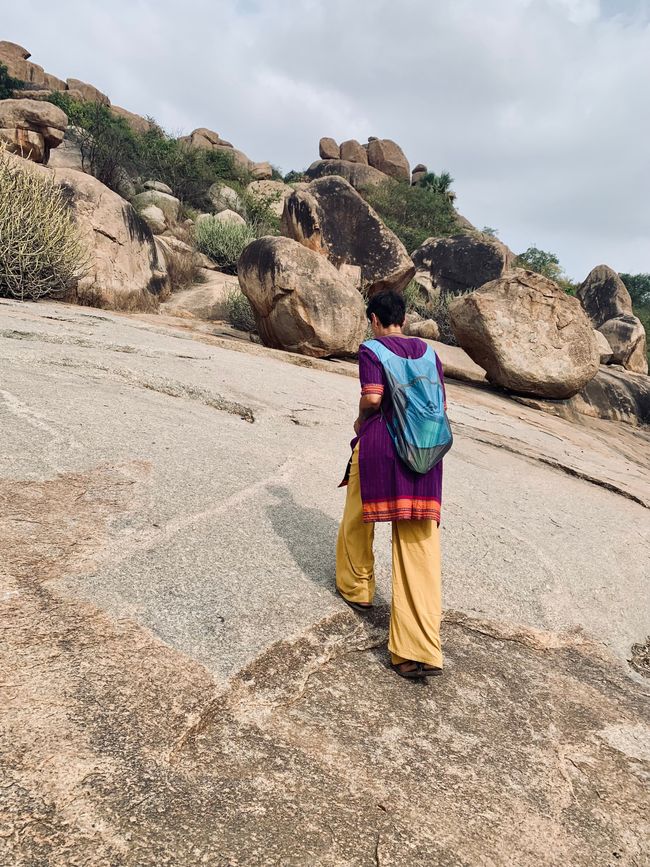
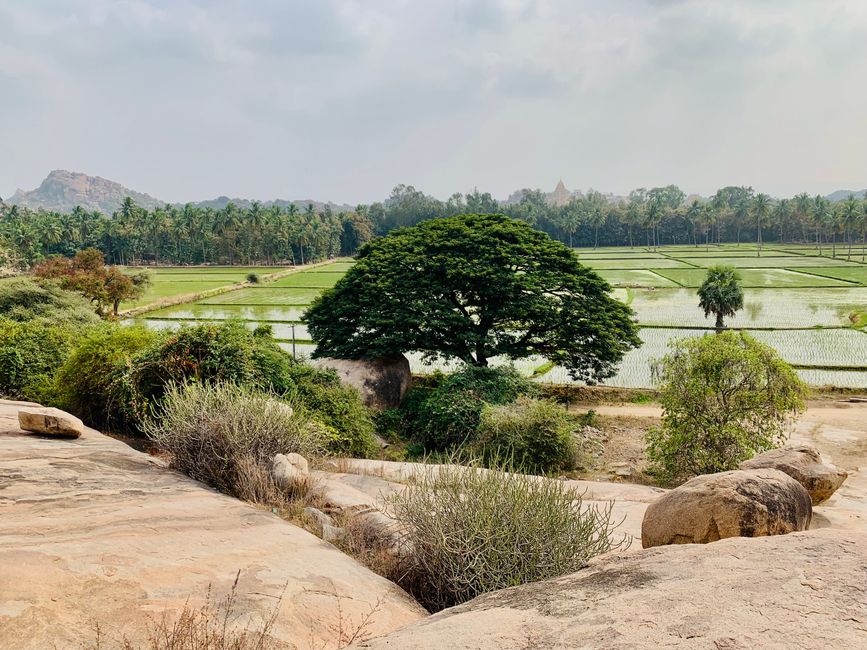
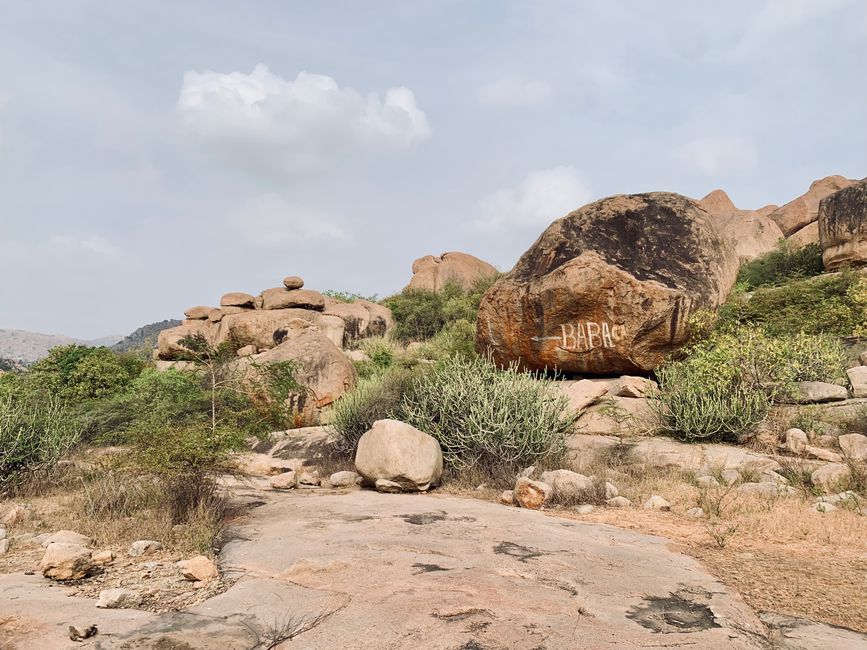
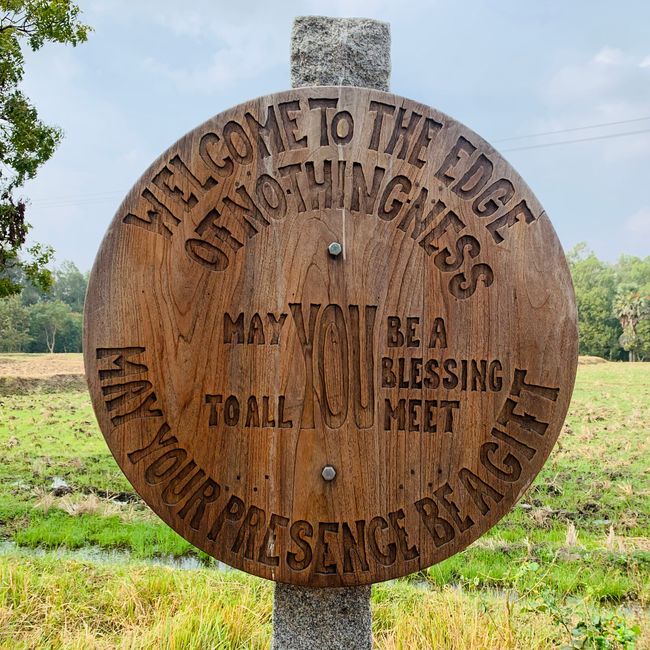
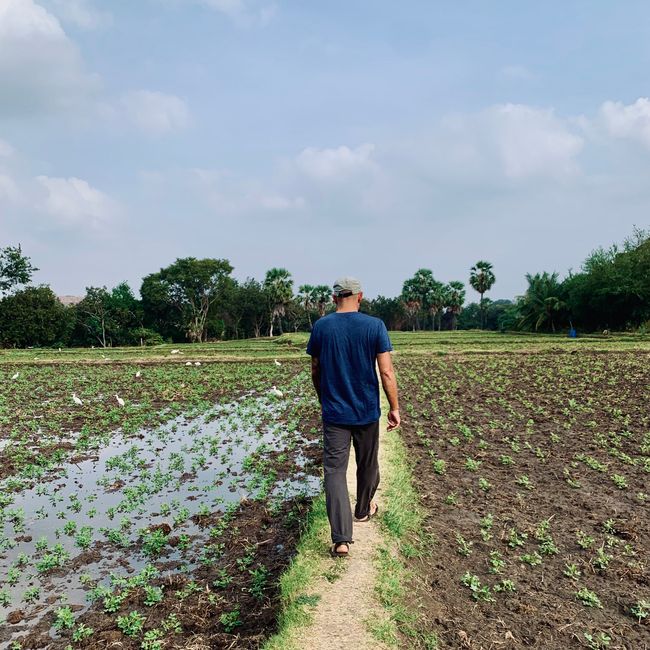

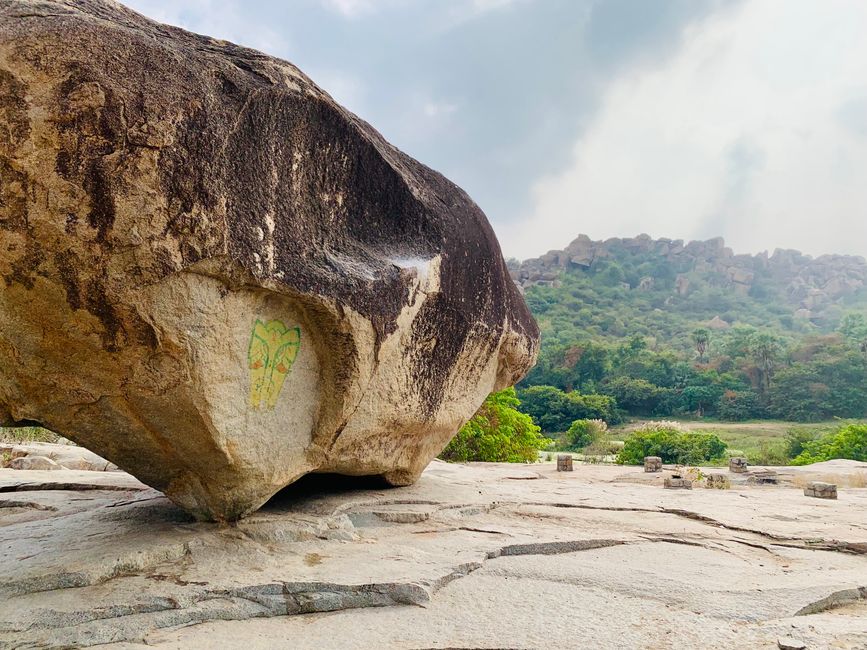
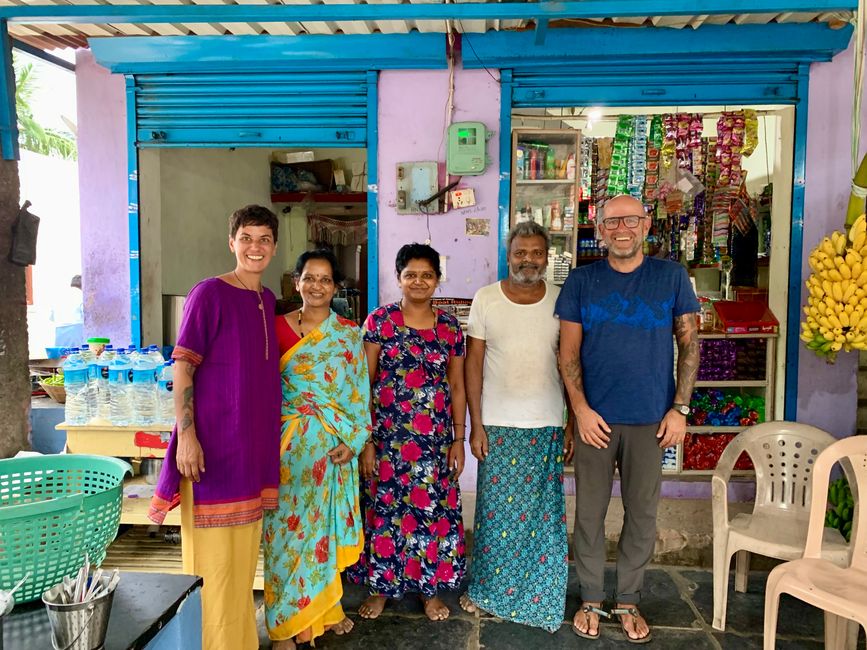
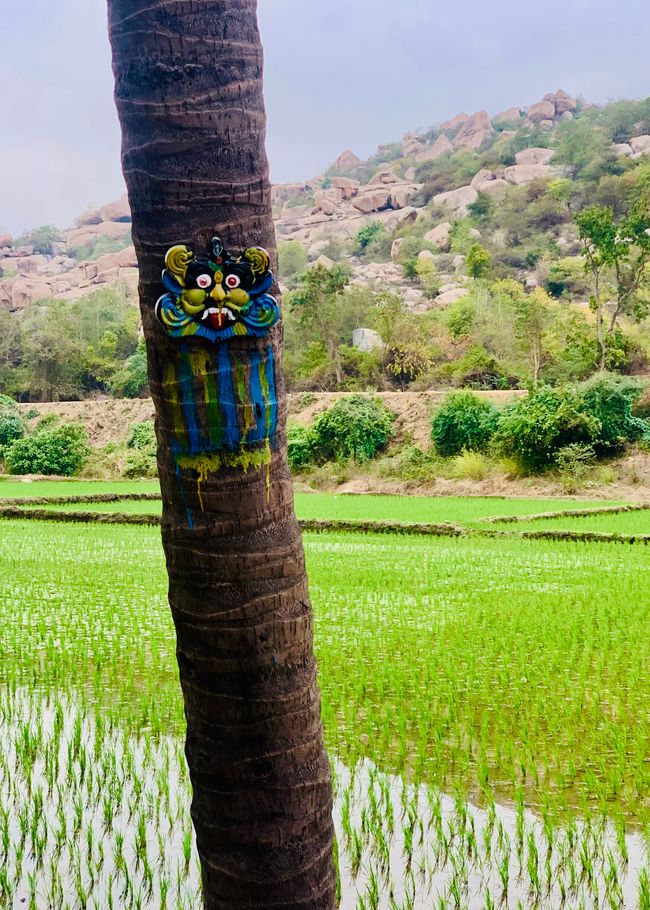

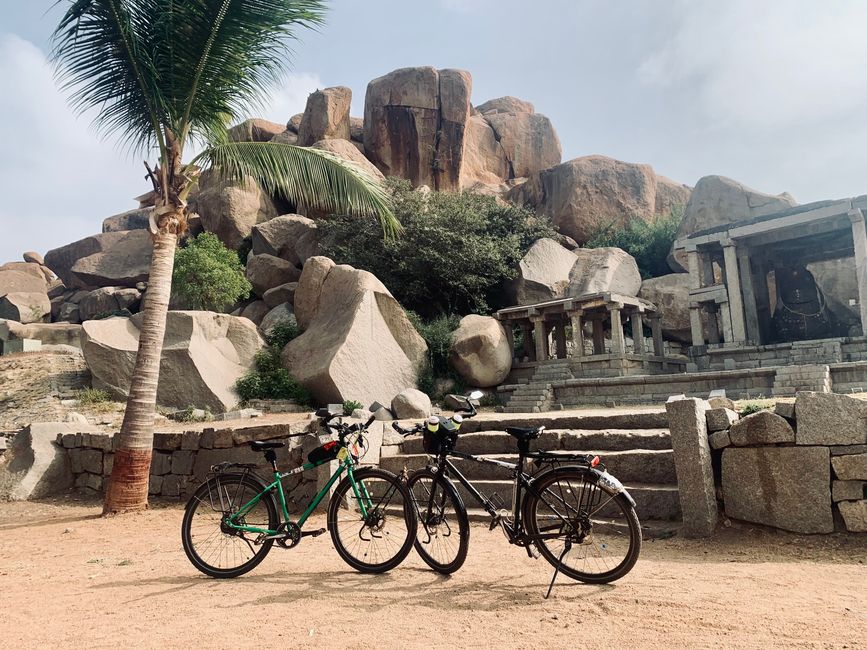
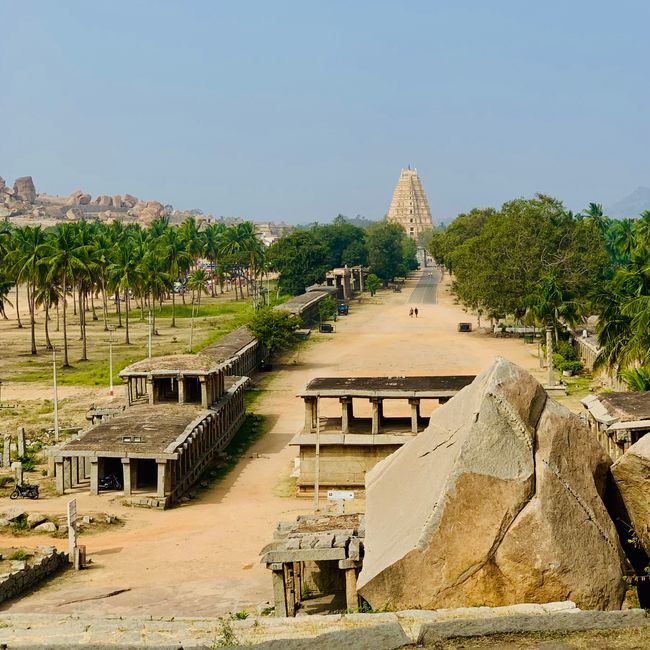

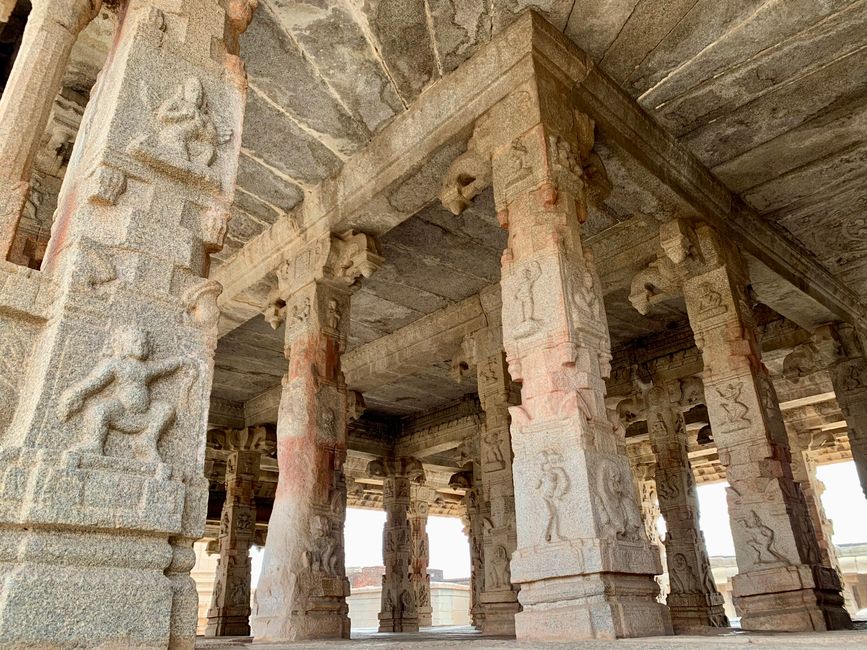
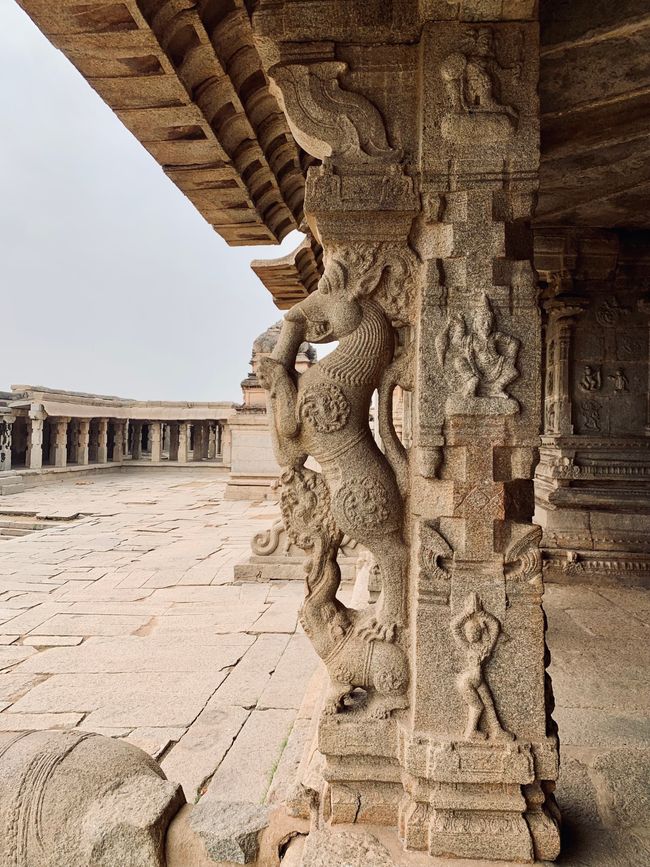


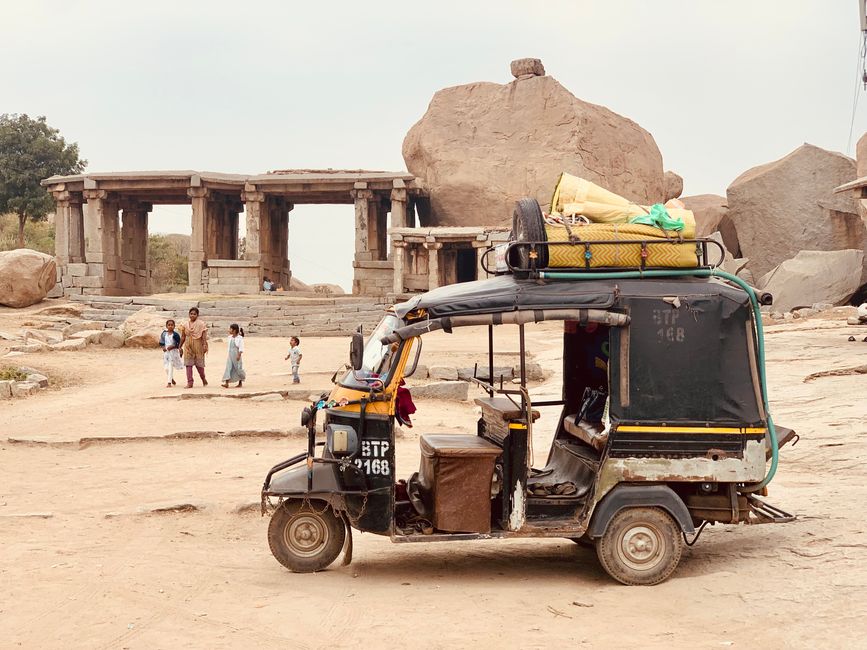
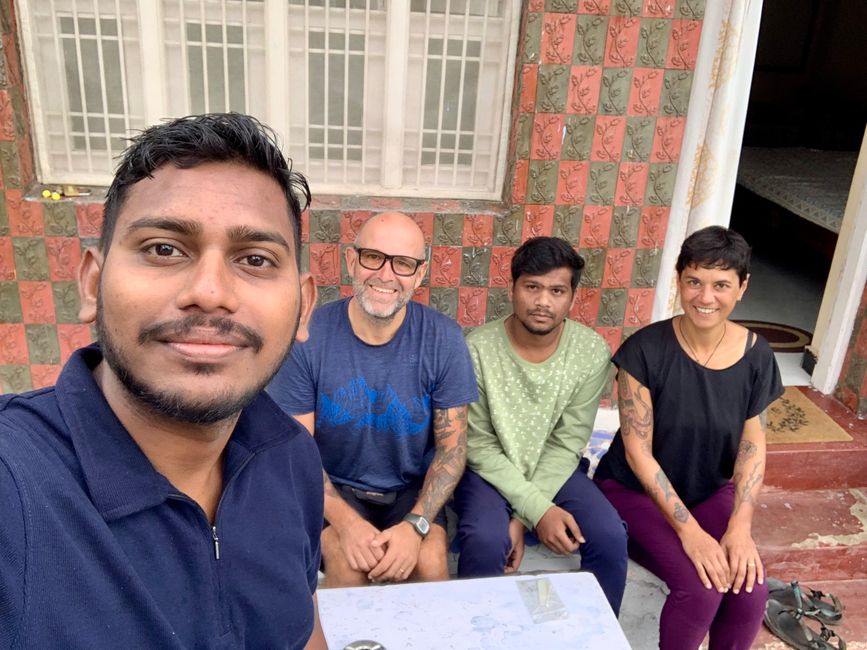


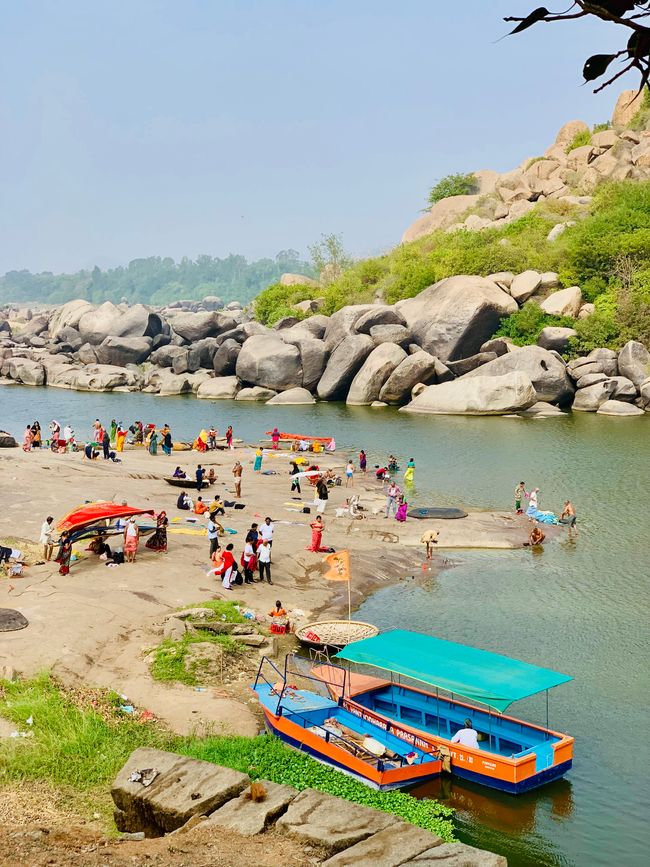

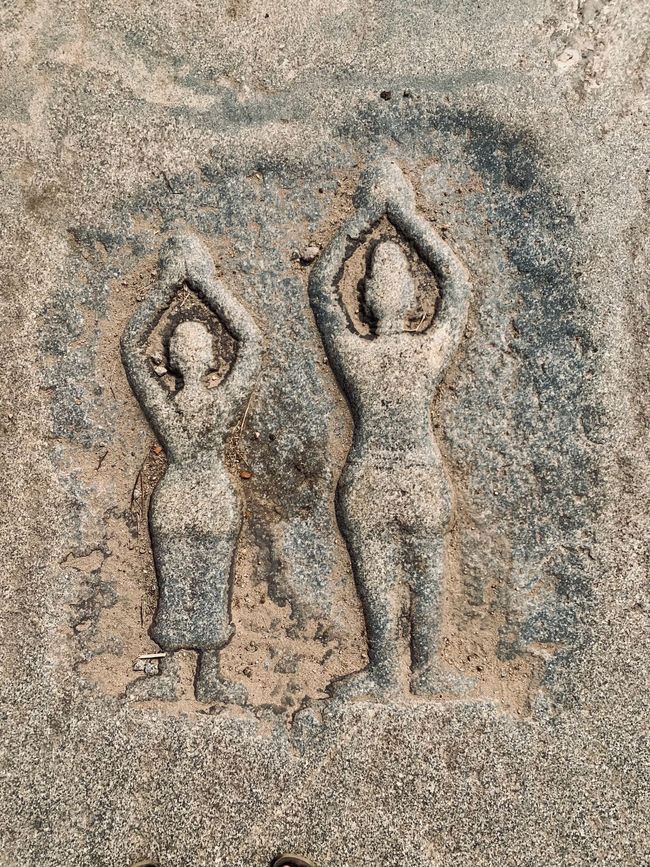

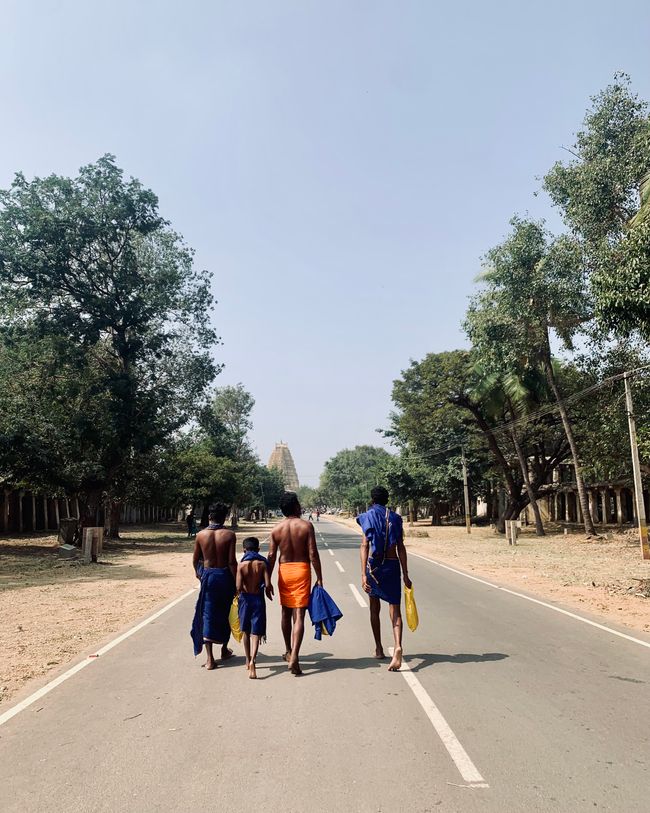
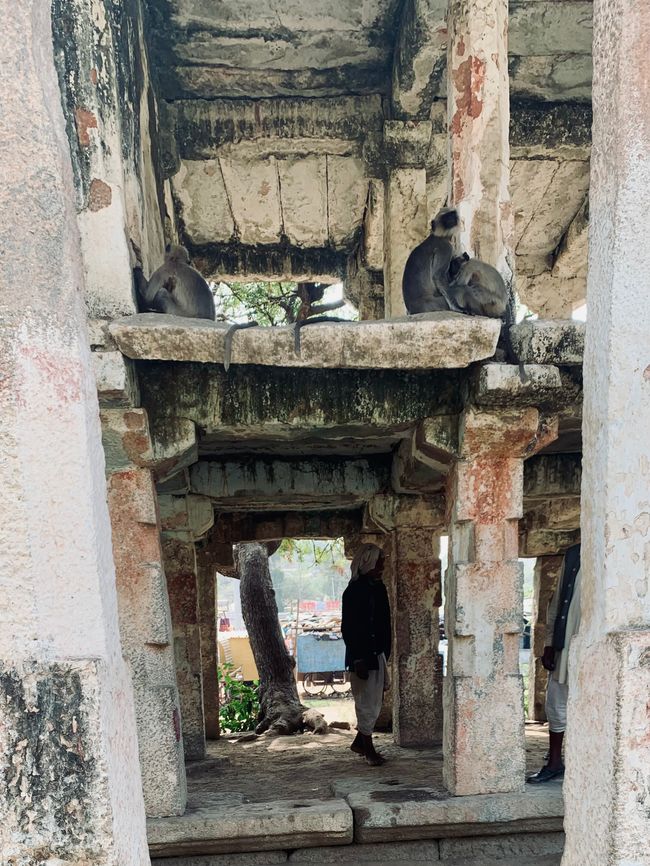
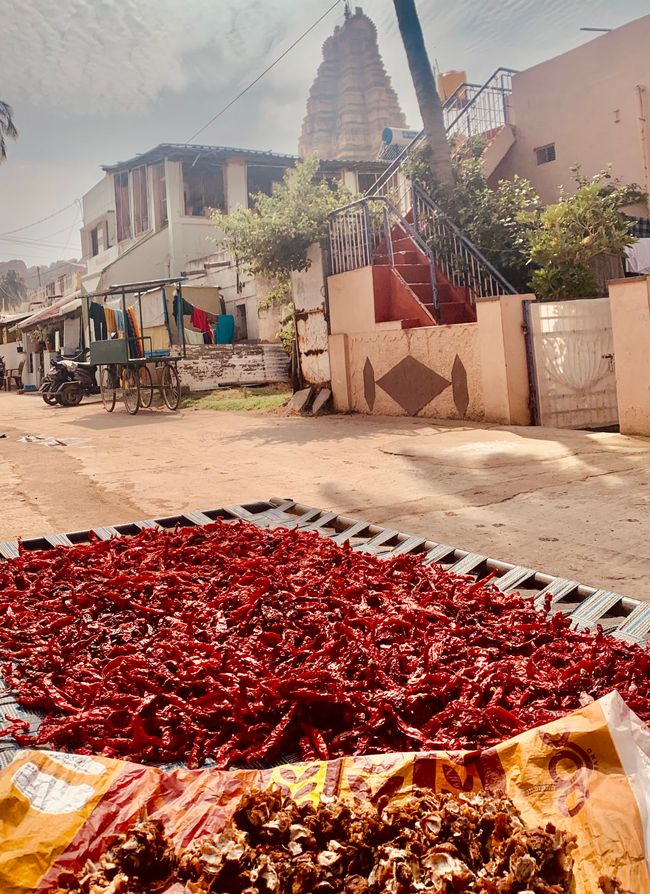
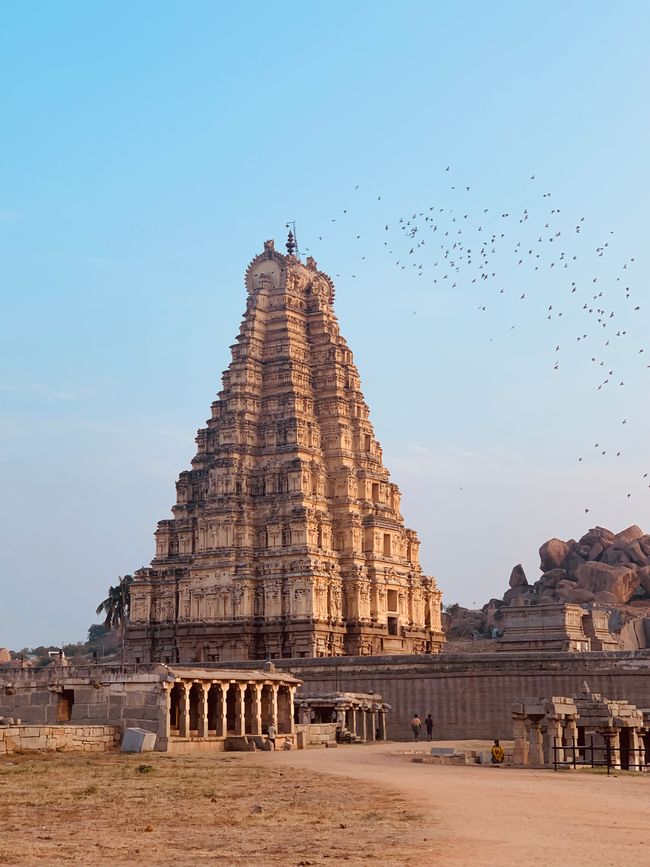
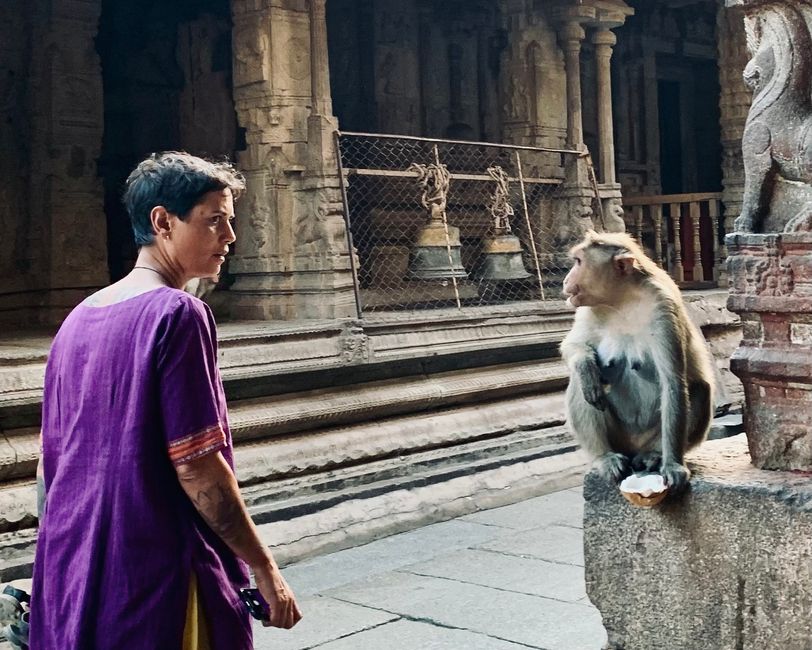
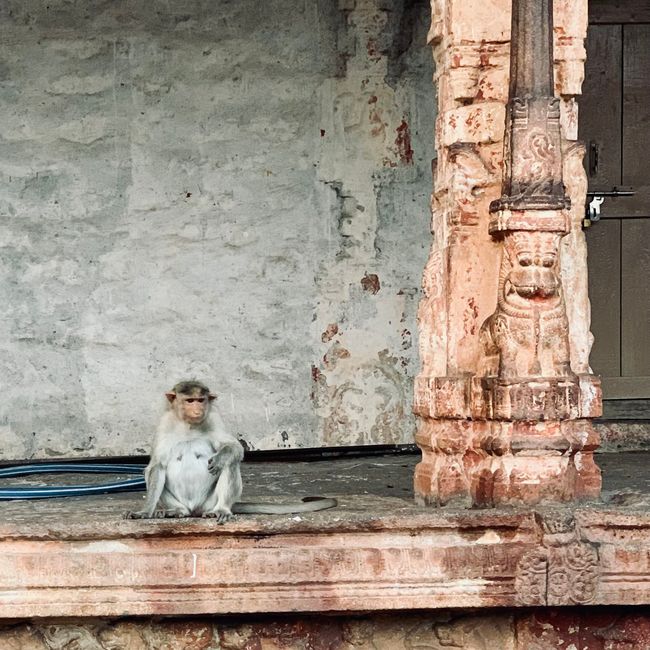
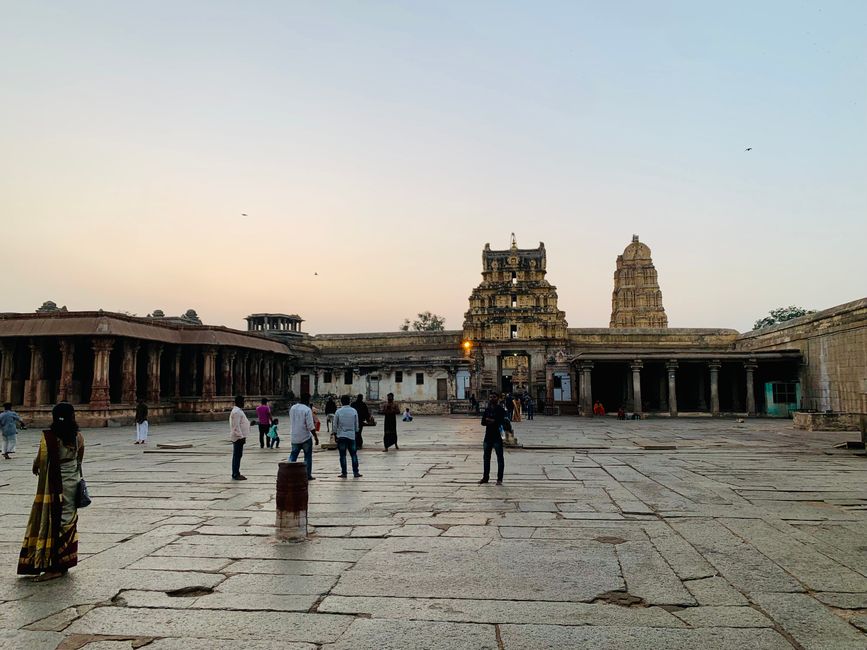
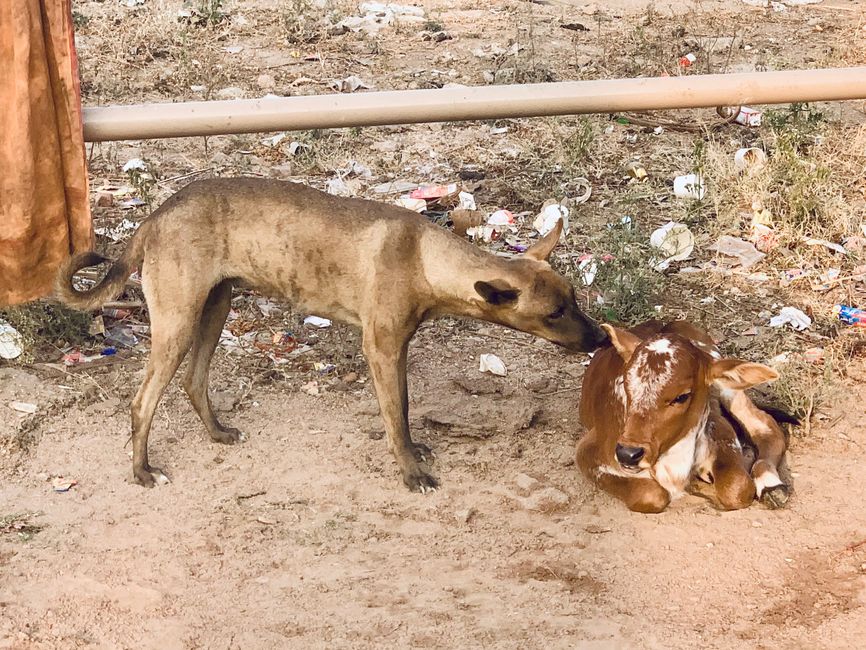
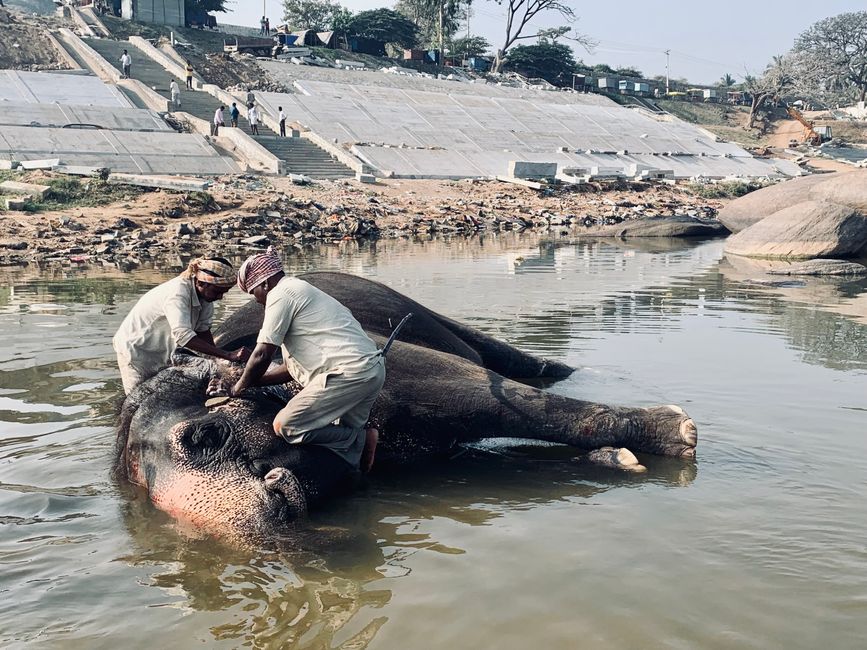
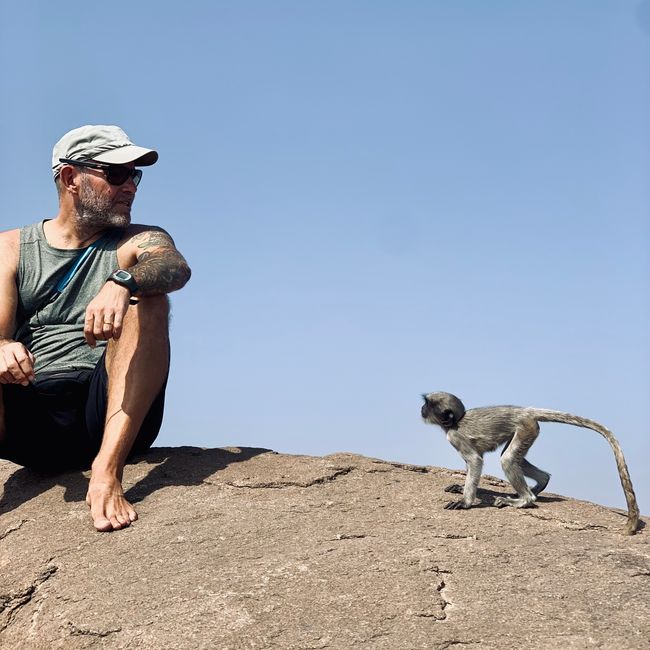

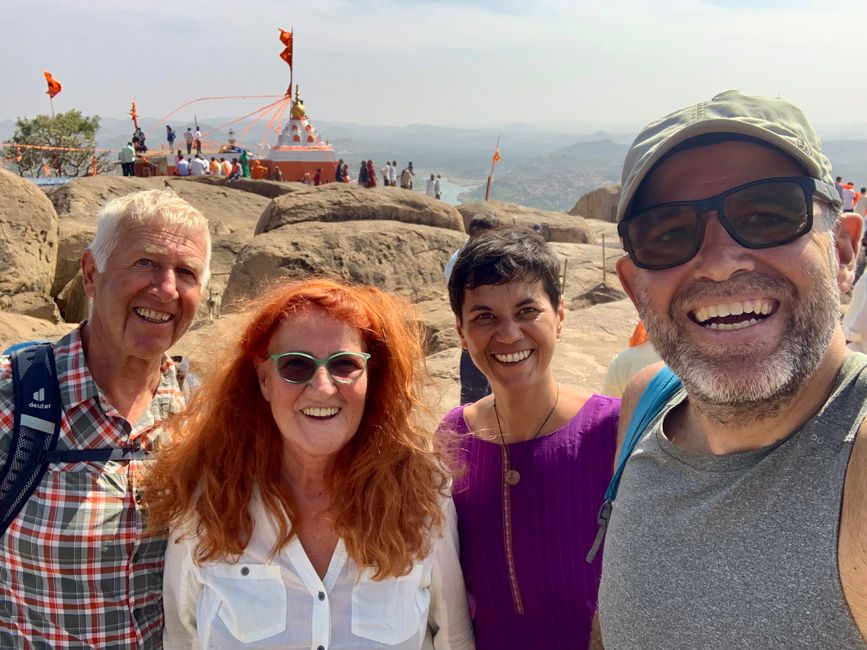
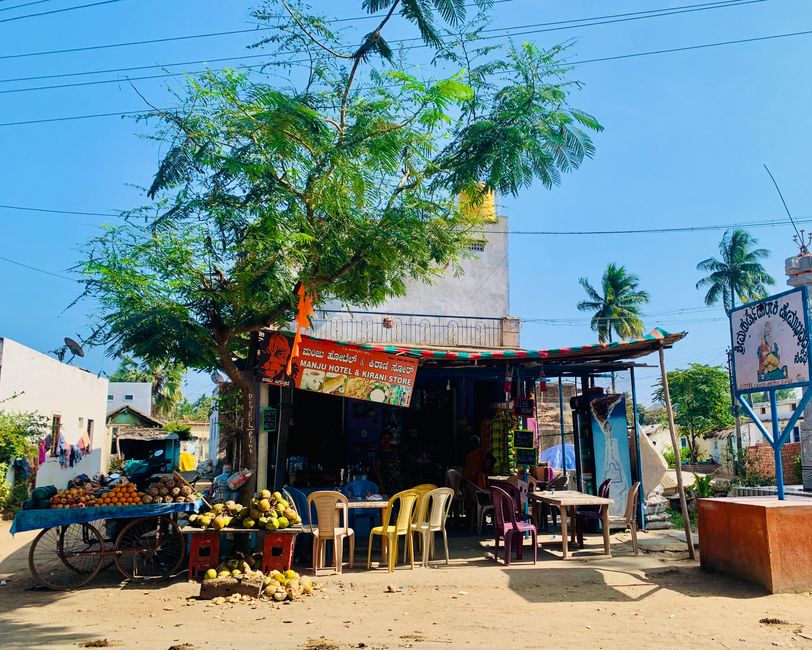
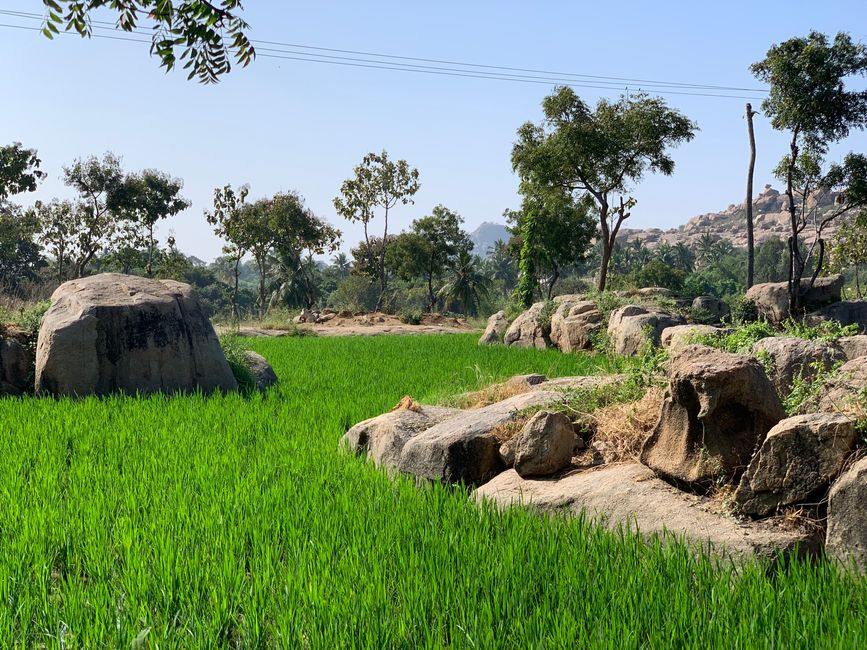
செய்திமடலுக்கு சந்தாதராகவும்
When we arrive at the Navadurga Temple in the village of Kanyale - somewhere on the southernmost coastal section of Maharashtra - we reach the long-awaited destination of our bike trip to India at the beginning of November. This is one of Sita's longing places. A place that brings back memories, that evokes feelings of home, even though it is so foreign and different from everything we both grew up with and know. It is a family place, a place of rest, a humble place; which is about neither less nor more than being. As we move on after 48 hours of contemplation and devotion, it is as if a reset button had been pressed. From now on there are only rough ideas and wishes for the onward journey.
For now we will only go a few kilometers further along the coast to Mandrem and Arambol in Goa.
Goa is a small state that has been popular with backpackers, hippies, dropouts and those seeking meaning from the West for decades. When the Beatles arrived here, they opened a floodgate that has not closed again to this day.
The journey over a 50 meter long bridge suddenly changes the scenery. Shortly before, we were driving along lonely roads and paths, past sleepy villages, empty beaches, through quiet forests and fields - the bridge that connects Maharashtra with Goa, very close to the Arabian Sea, suddenly takes us into a completely different world.
Suddenly the streets are full of two-wheelers. Beautiful people coolly roll around with naked or half-naked torsos on low-humming Royal Enfields*. Buses, taxis and even more scooters don't leave much peace and tranquility behind.
We feel somewhat reminded of the Salzkammergut. Locals share their beautiful surroundings with crowds of tourists. Are patient with and annoyed by them. Do your business and keep up with the times in your offerings. It is being built and expanded - everything to make it as pleasant as possible for visitors. Indians from the north are snacking on something by offering goods from Punjab, Rajasthan and Nepal.
Before we join the hustle and bustle of dropouts and artists, hippies and vacation-ready young families, exuberant groups of men and honeymoon couples in love, we retreat for almost 5 weeks to learn yoga.
Over the next five weeks at the Himalaya Yoga Center, yoga master Lalit and his team will give us insight into the yoga tradition of Sri Rama and BKS Iyengar - two of the great yogis of our time. We are busy from morning to evening practicing asanas *, directing our breath using pranayama **, meditating and in between learning something about yoga philosophy, anatomy and Ayurveda. Pretty intense.
For us it's a bit like a vacation. The facility is clean, well organized and mostly very quiet. We serve extremely delicious food twice a day and they even clean for us! We feel cared for and can fully engage in yoga. My evening walks take me past a small pack of dogs every day. A temporary friendship develops again.
After 5 weeks it's time to move on again. We stay in the area to digest what we have learned.
We spend the next three weeks being sick. Then with cozy holidays at the end of the year. We explore the local cake bakeries together with our guesthouse neighbor and yoga friend Kerstin, marvel at original old hippies dancing to the music of an electropunk band called Arampunx , practice yoga, often feast on home-cooked food, walk on the beach and plan our onward journey to the north.
We replan and replan until we finally set off for Karnataka on January 1st with a rough idea. A state located southwest of Goa, home to the ancient village of Hampi.
For the first few kilometers we make our way through the hustle and bustle of the busy coastal towns. A few curves and intersections further inland we are again surrounded by silence and streets almost empty of vehicles. A widely branched river surrounded by swampland slowly leads us out of Goa towards the Western Ghats - a hill that separates the coastal area from the interior.
On the second day back in the saddle, we are supposed to cover almost 2000 meters in altitude and only reach the highlands of the state of Karnataka at around 800 meters above sea level. This is a kind of initiation - after all, we were away from the streets for two months and didn't unpack our running shoes.
It feels so incredibly good to be wandering around again!
It's a real pleasure to see landscapes changing, to be curious about what will be around the next bend, the next hilltop. To dwell on your thoughts while pedaling and to bring them to a standstill again and again. Arriving in villages and towns in the evening to look for a room and falling asleep, tired, shortly after dark.
The route takes us from one small town to the next. Large enough to have accommodation facilities. We quickly get used to the routine of leaving and arriving again. The day's laundry is washed, usually in bucket showers with which we wash off the dust from the street. We don’t always have the space or energy for yoga asanas.
The weather up here is pleasant in January. The days are hot but dry. The environment is noticeably flat and windy.
The further inland we go, the more rural it becomes. Wooden carts pulled by powerful zebus and tractors mingle with the vehicles that share the roads and paths with us. Colorfully decorated with pompoms, tinsel and floral decorations. Herons strut busily behind the machines as they dig up the fields.
The villages we pass through consist of small houses and huts. Often there is a bed outside. The water pipe is attached to the small forecourt; there don't seem to be any sanitary facilities in many of the accommodations. In the morning we see the residents disappear into the surrounding landscape with small buckets of water to relieve themselves. This is not a new observation, but it makes me think that we as humanity have not yet managed to provide basic sanitation for everyone.
In the first week of our onward journey we meet people who ask us for tips for their upcoming trip to Europe. People who look at us in amazement when we cross their paths. People who ride bikes themselves and are looking for an exchange with us. We wave and smile.
We drive on highways and muddy dirt roads. We find our way on gravel roads and small, beautiful country roads.
We cycle past fields and ride along rivers. Fight for priority when driving in the cities and roll comfortably through the villages.
And at some point, after a week of panting, kicking and enjoying, we reach the bizarre area around Hampi.
Hampi is a historical site that was the capital of the last Hindu empire of Vijayanagar from the 14th to 16th centuries under the name Vijayanagara. ****
We spend a few days here exploring the ruins and temples. We walk over the boulders and visit old acquaintances with whom I spent time many years ago. There is a warm reunion, we hear both good and sad news. About the careers of all the villagers who played a role back then. And of the far too early deaths of some.
Everything here, not just the people, has changed. Tourism now focuses on the cultural sites and still active Hindu temples. The backpackers have made room for pilgrims and culture enthusiasts on one side of the river, and boulderers on the other side. Very likeable, very pleasant because calm and gentle.
After a few days it is time to move on. The north of the country is calling to us.
Text: Sita
*Indian motorcycle
**Physical exercises
***Breathing exercises
**** according to Wikipedia
செய்திமடலுக்கு சந்தாதராகவும்
பதில்
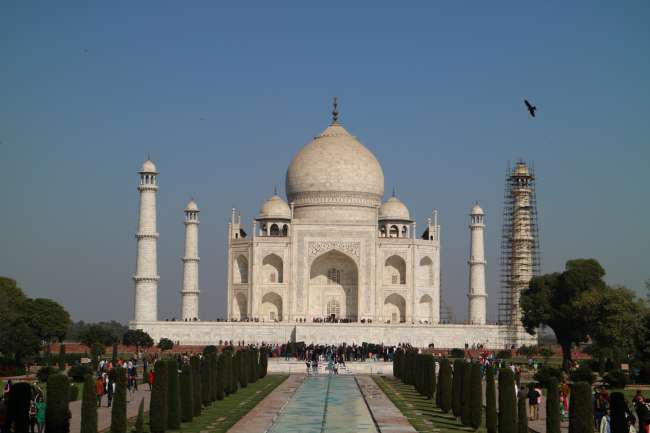
பயண அறிக்கைகள் இந்தியா
